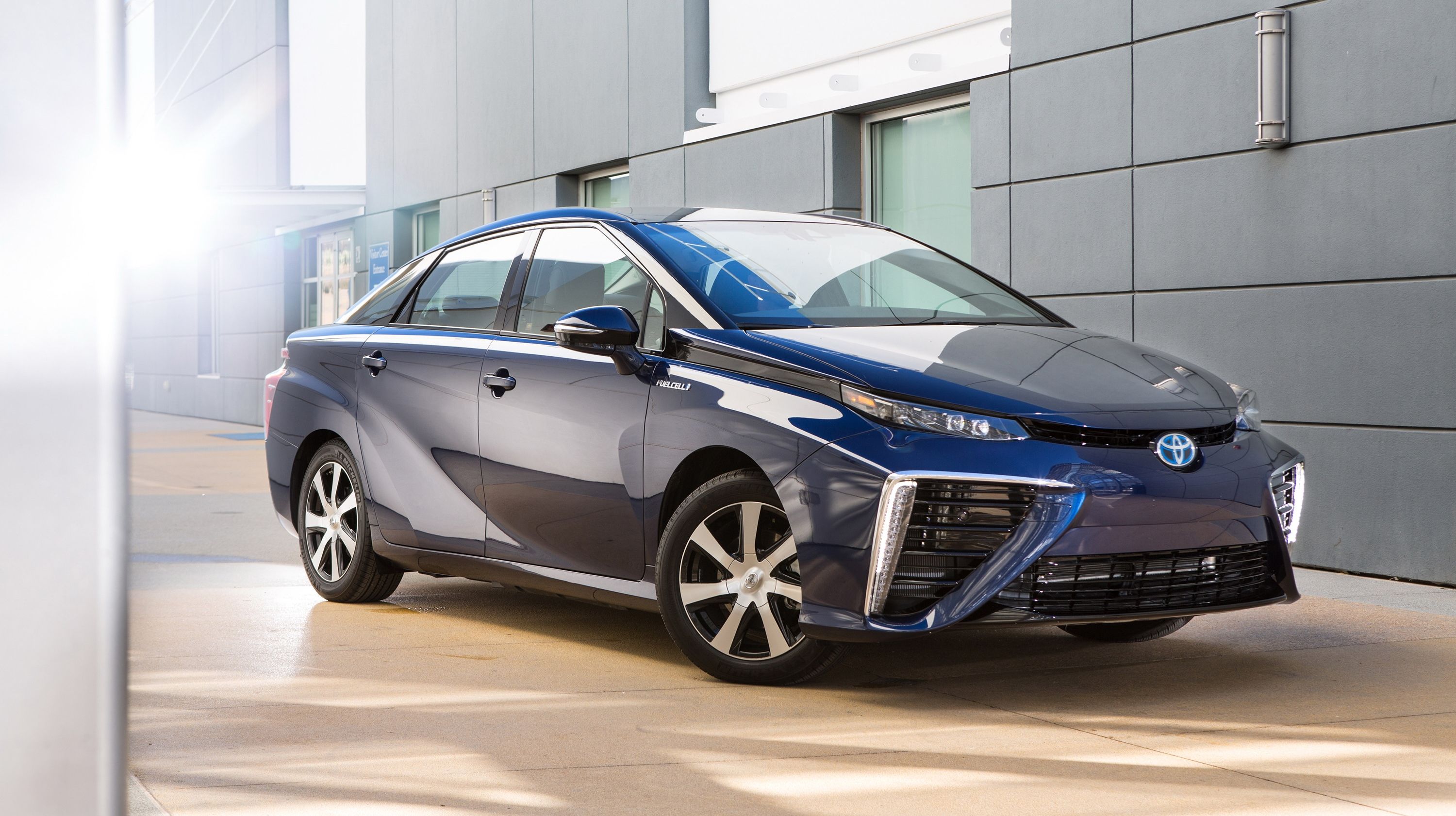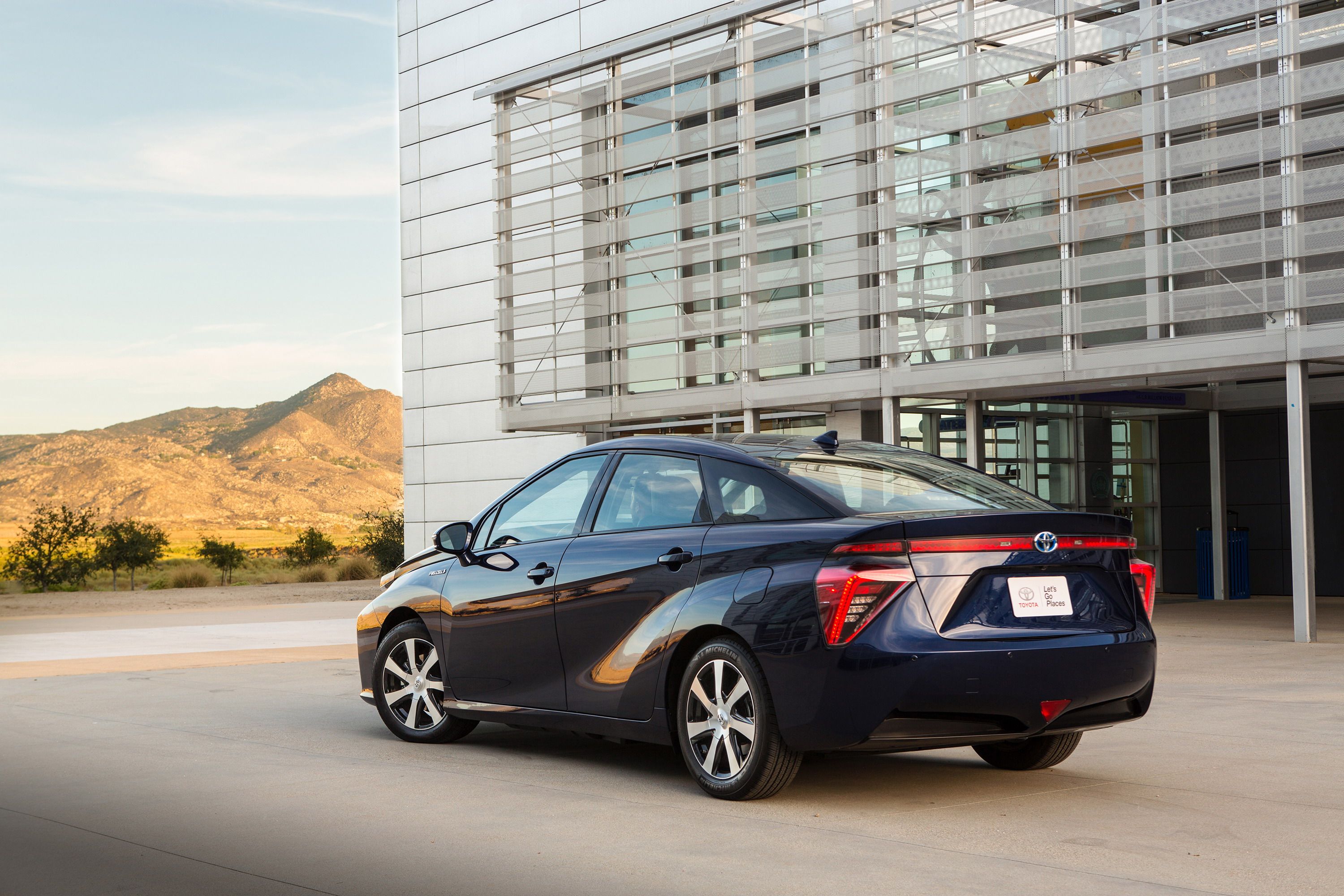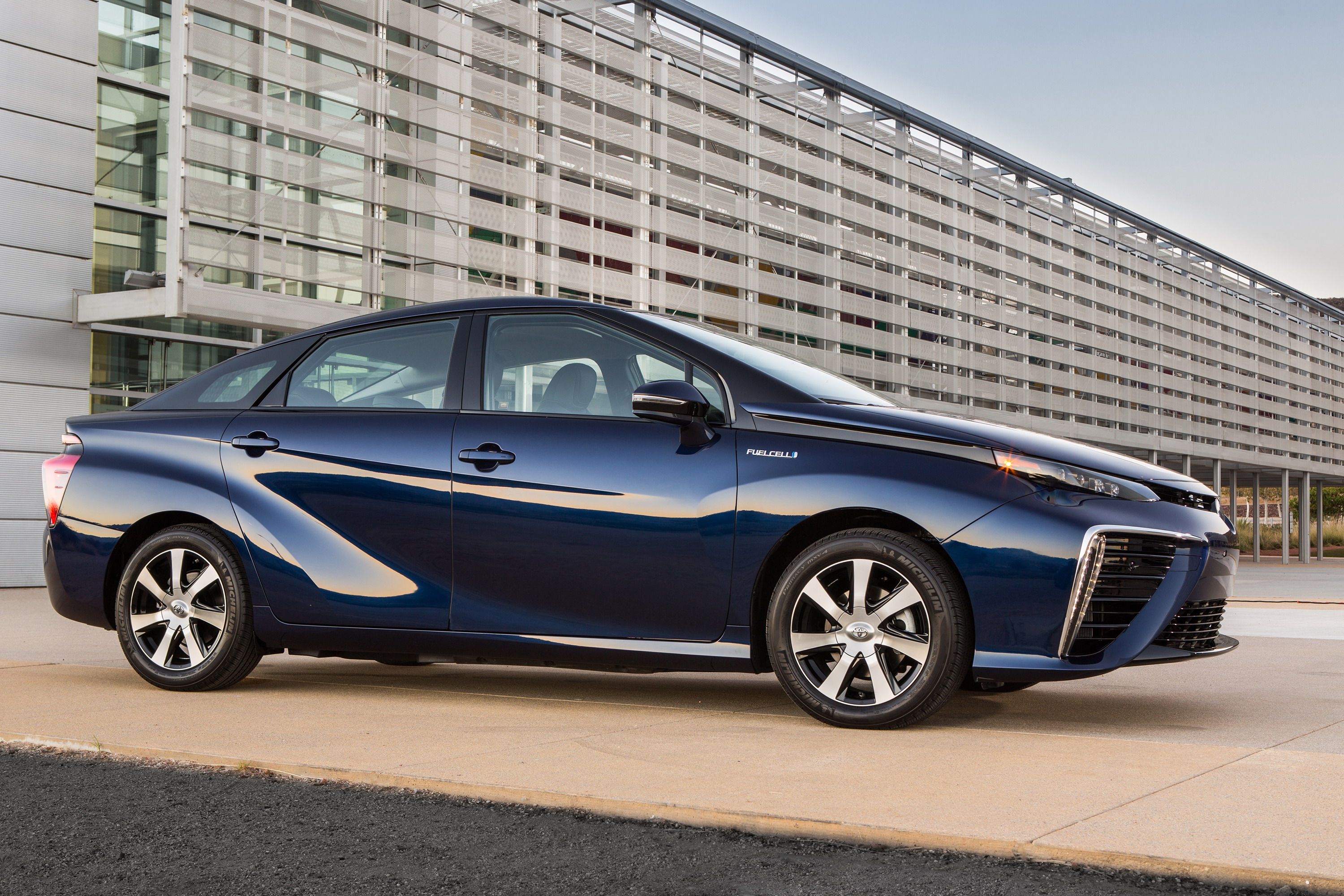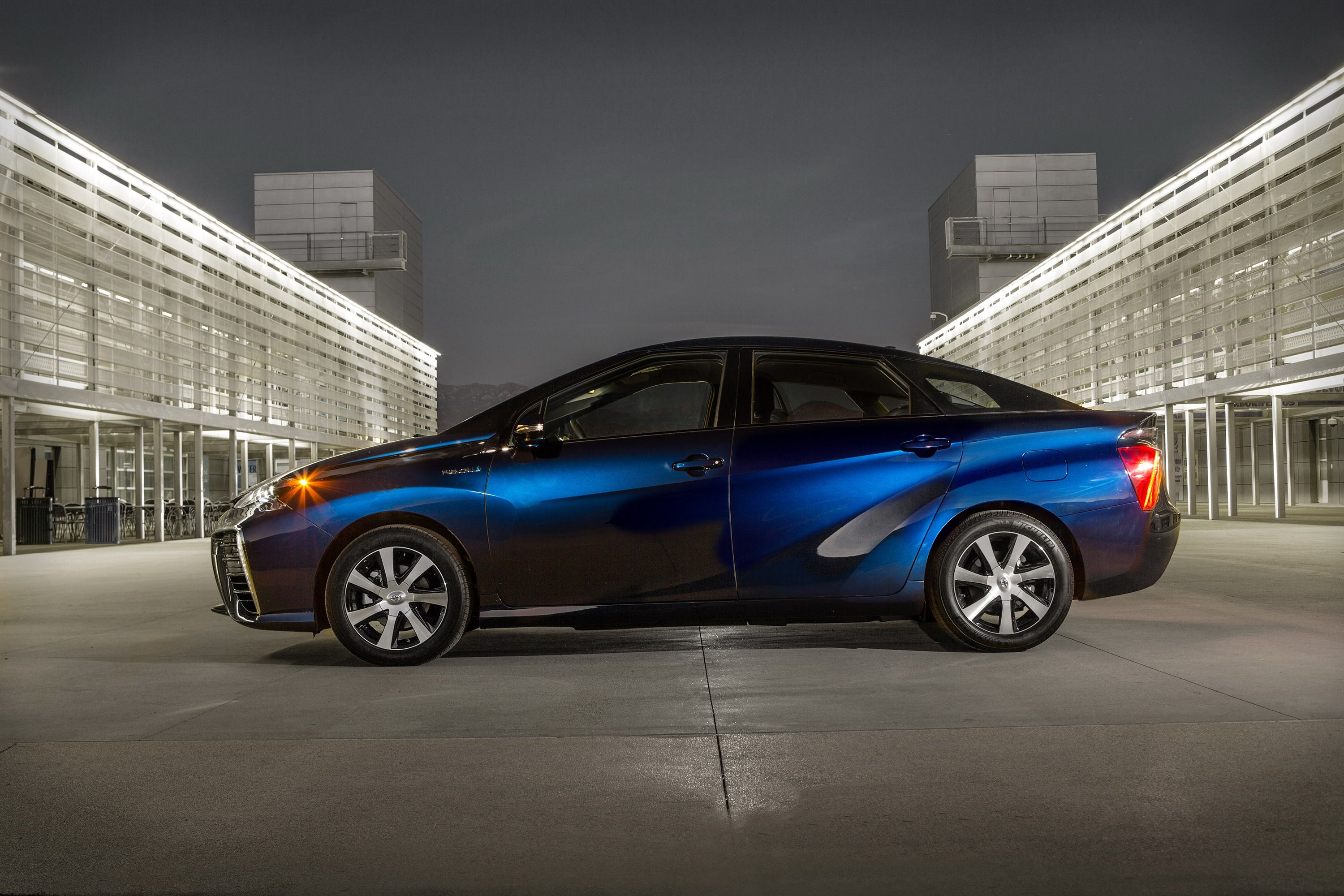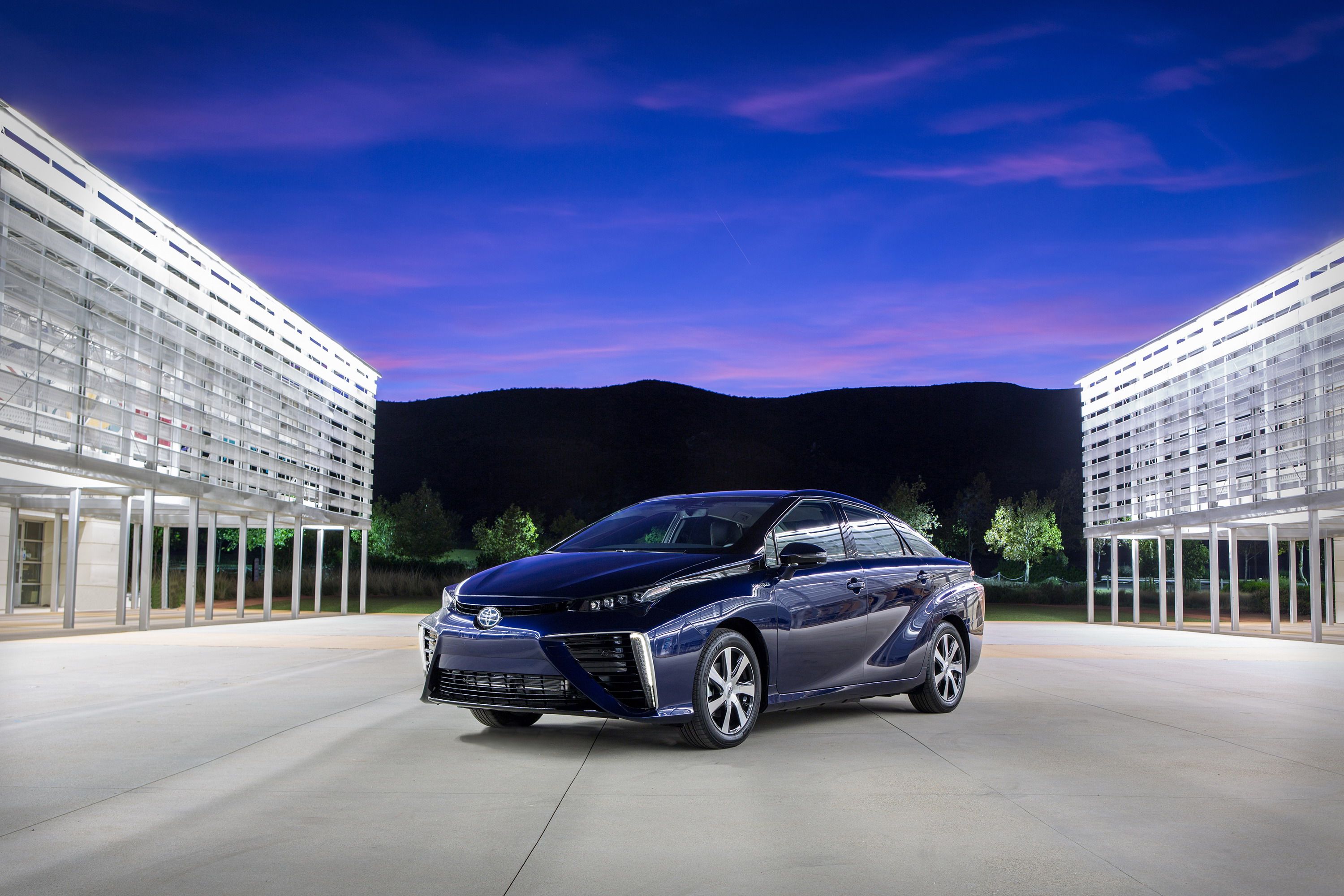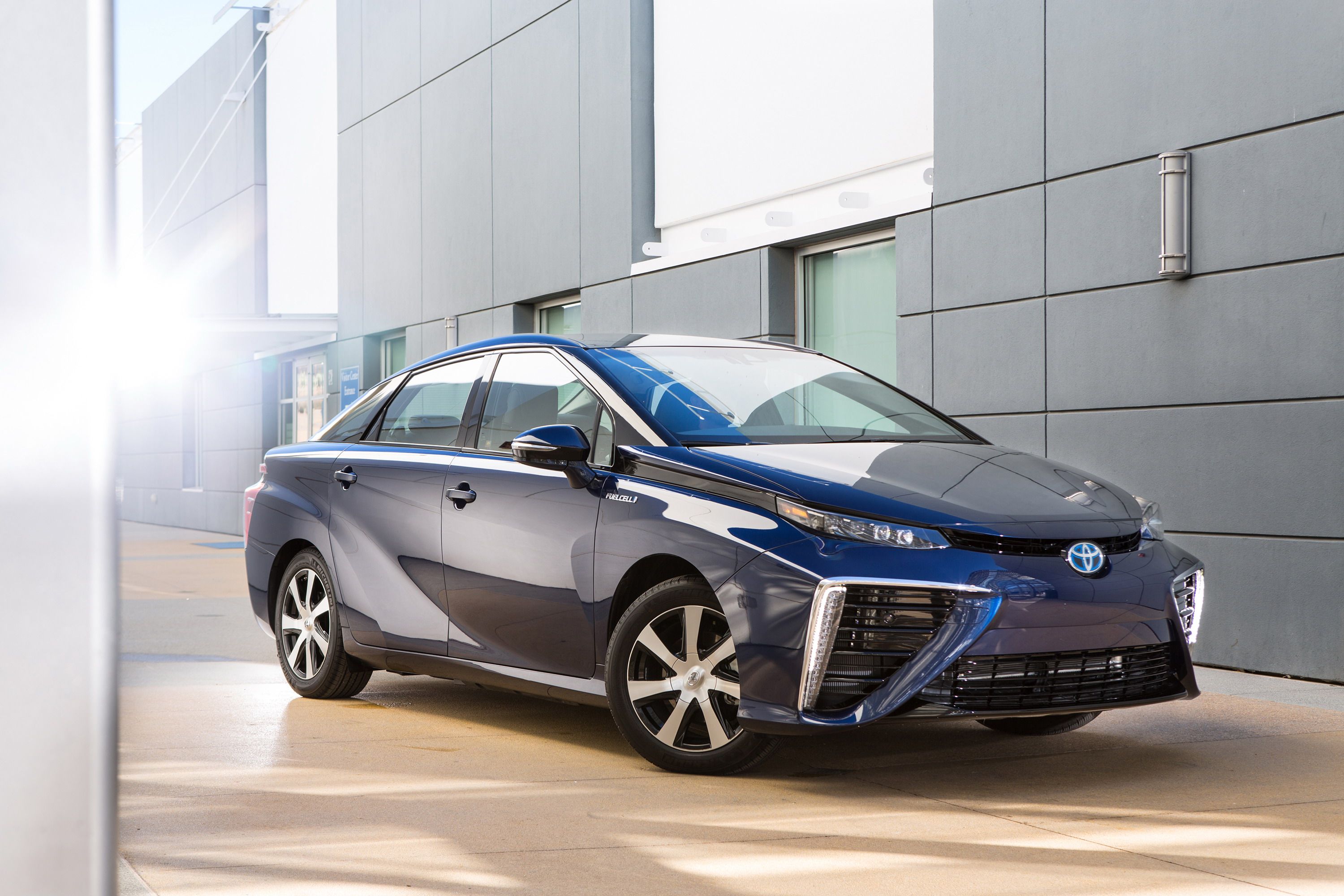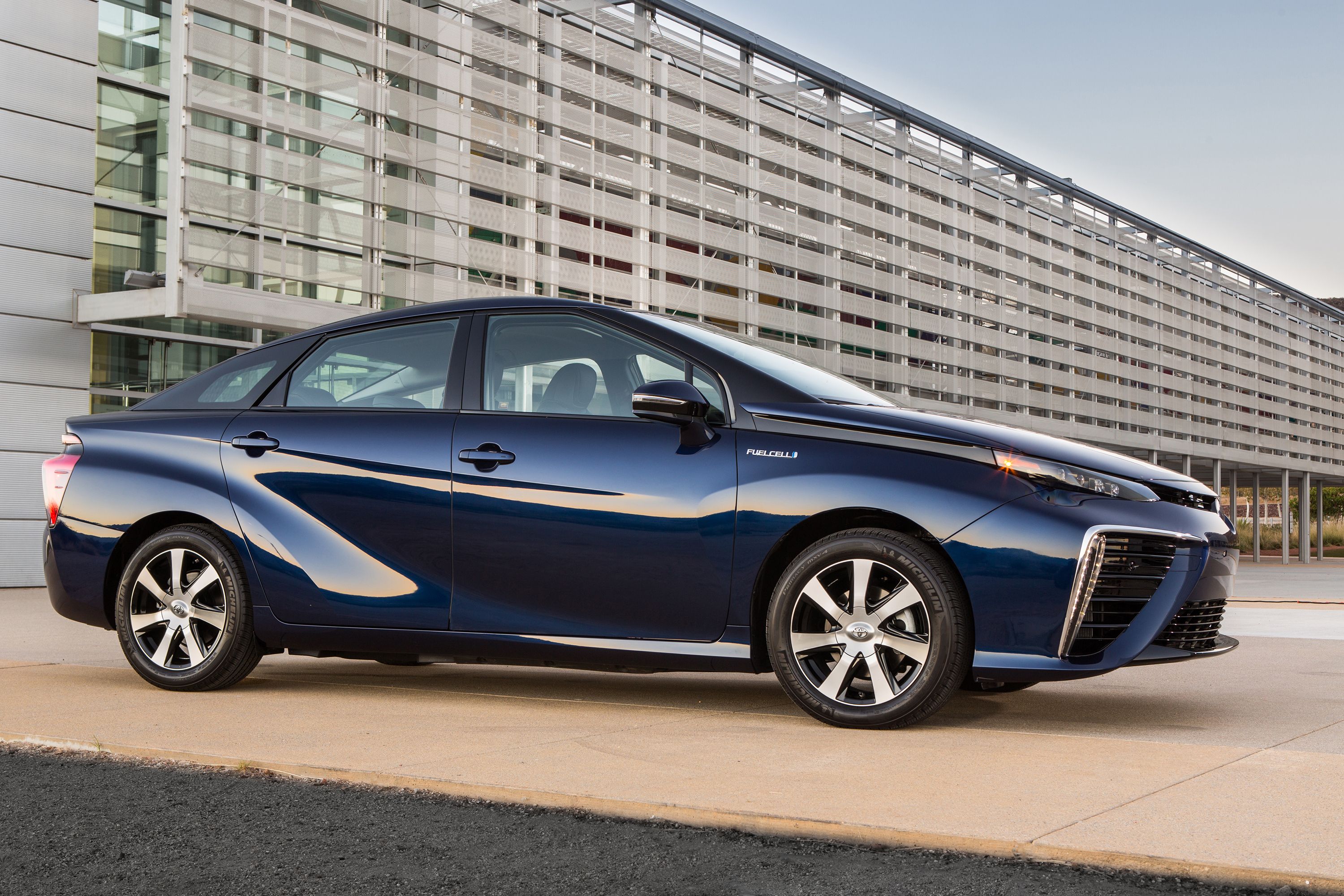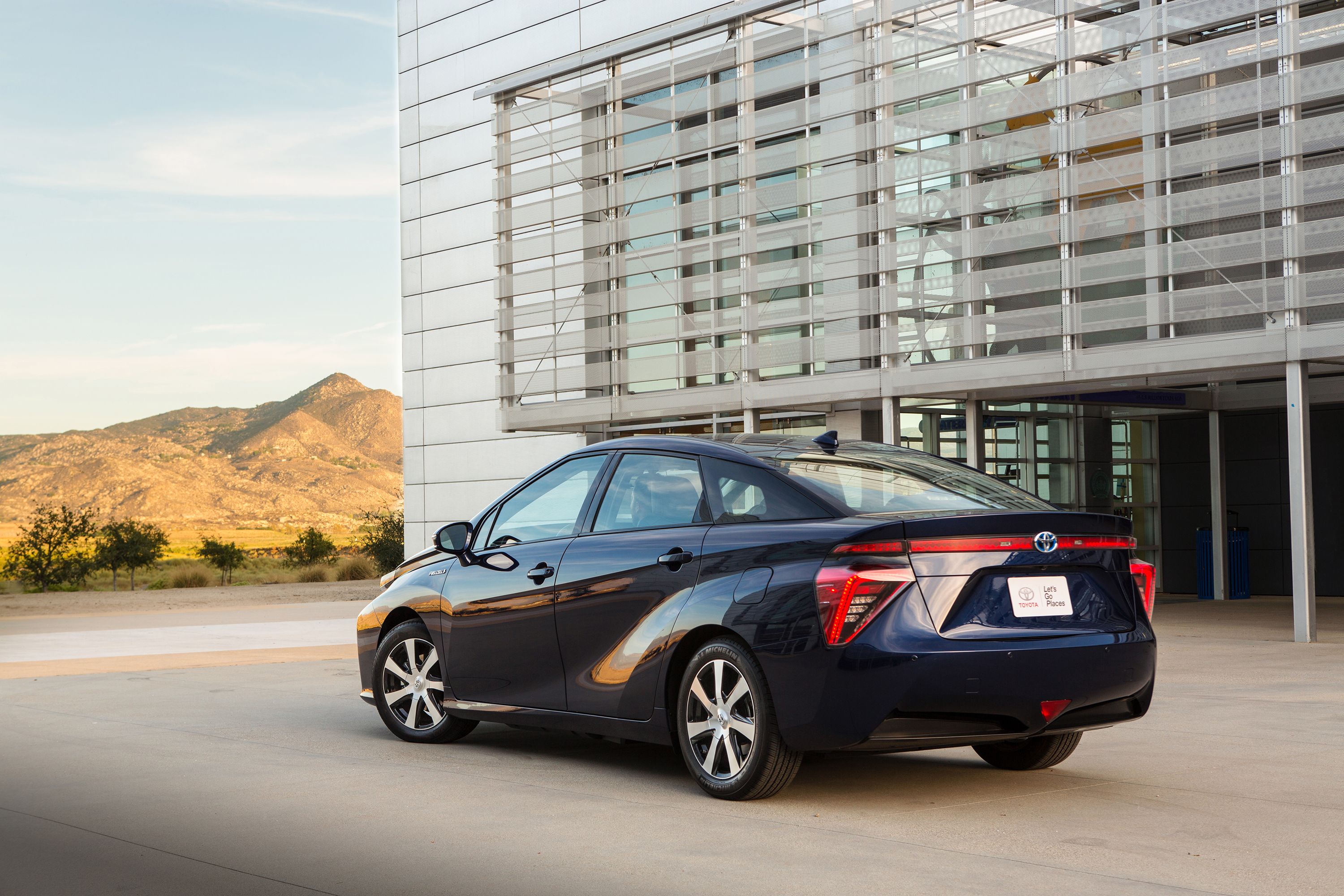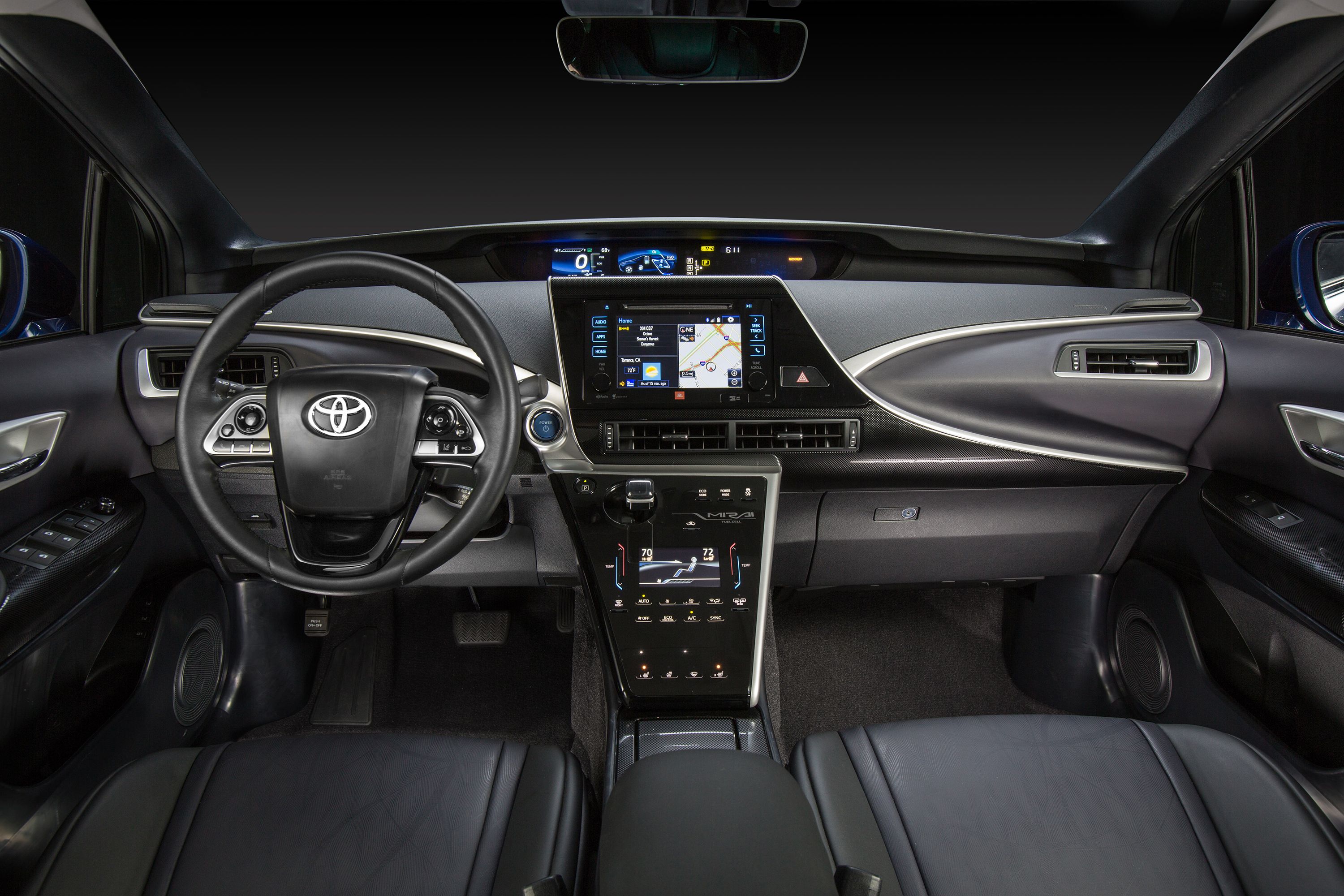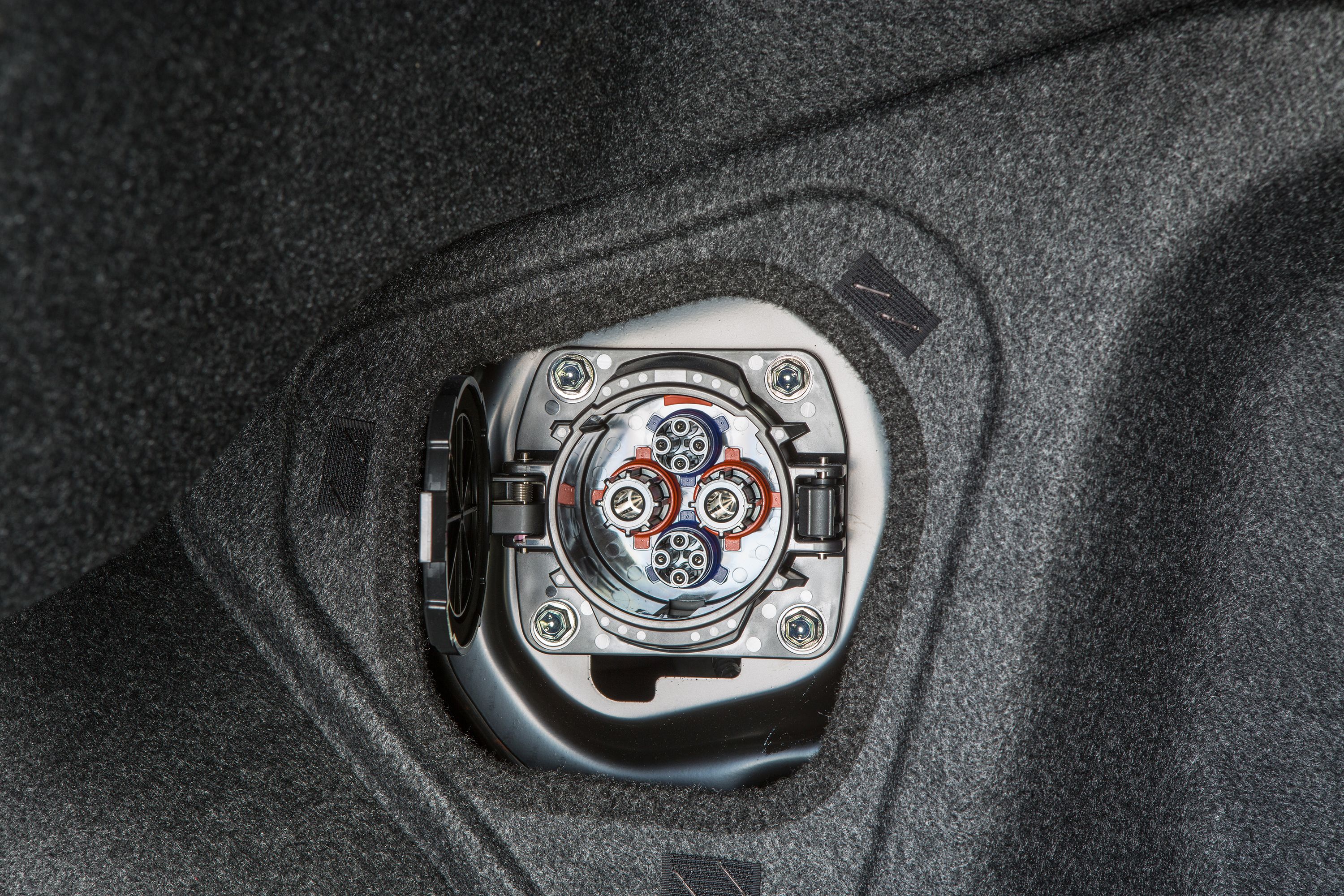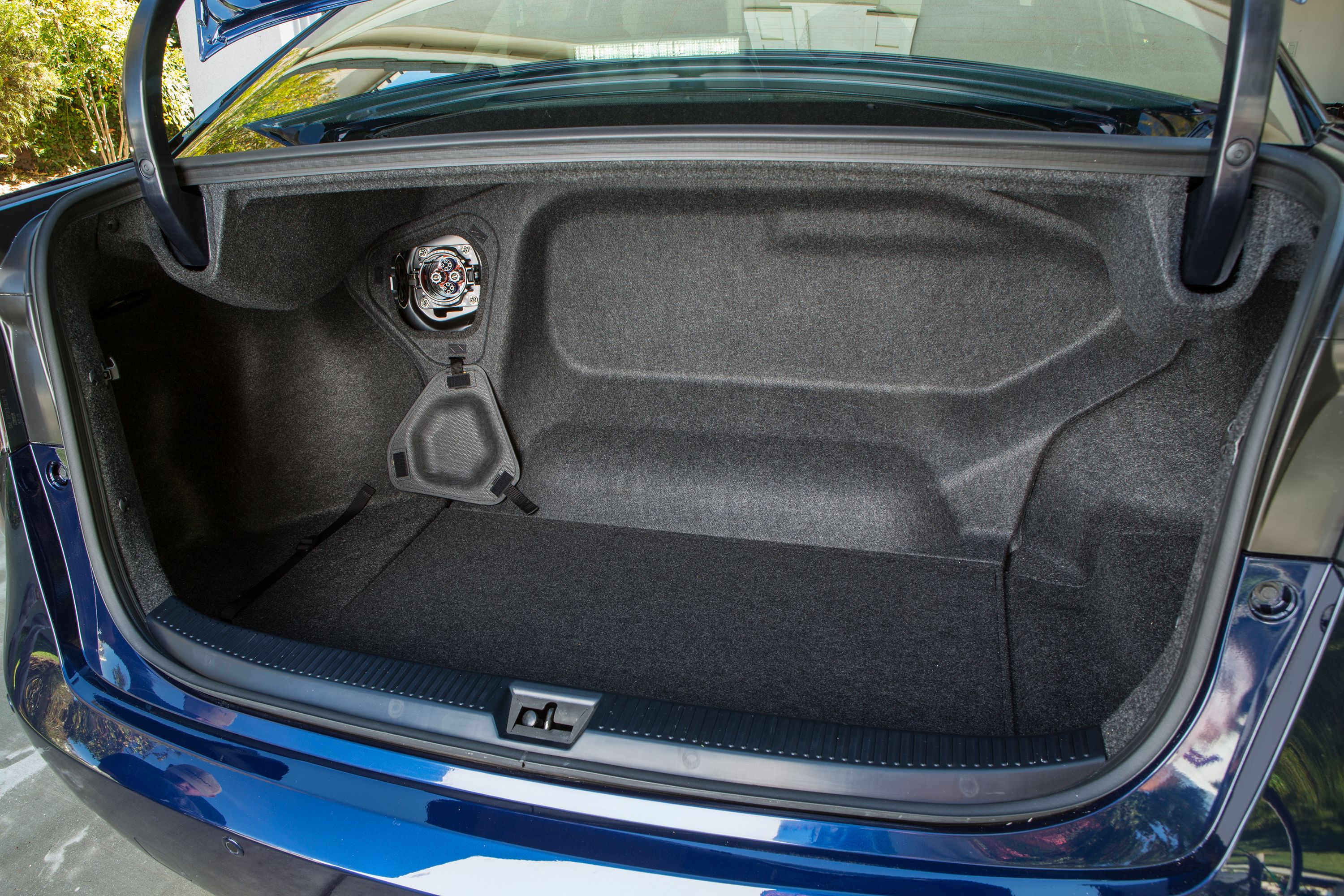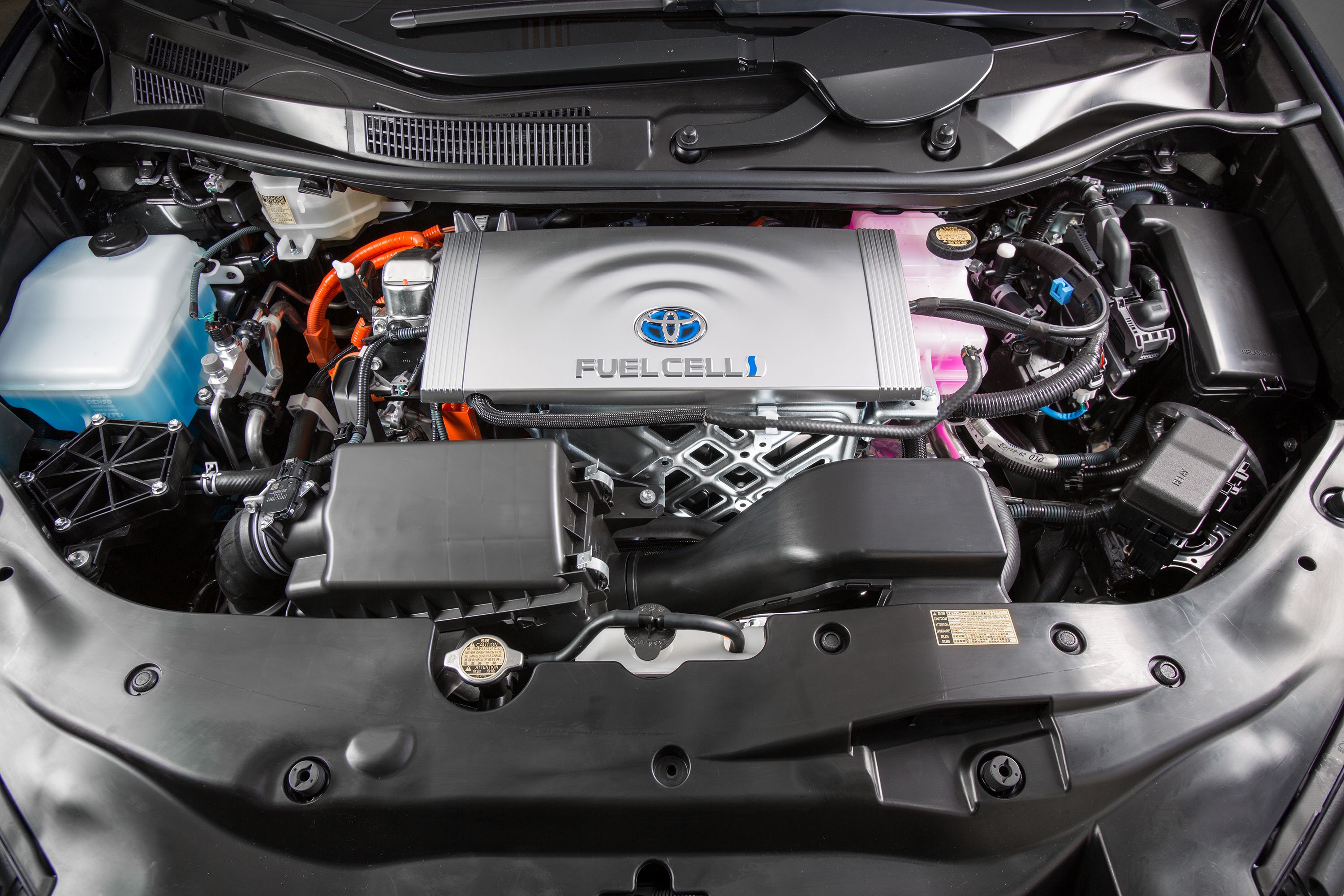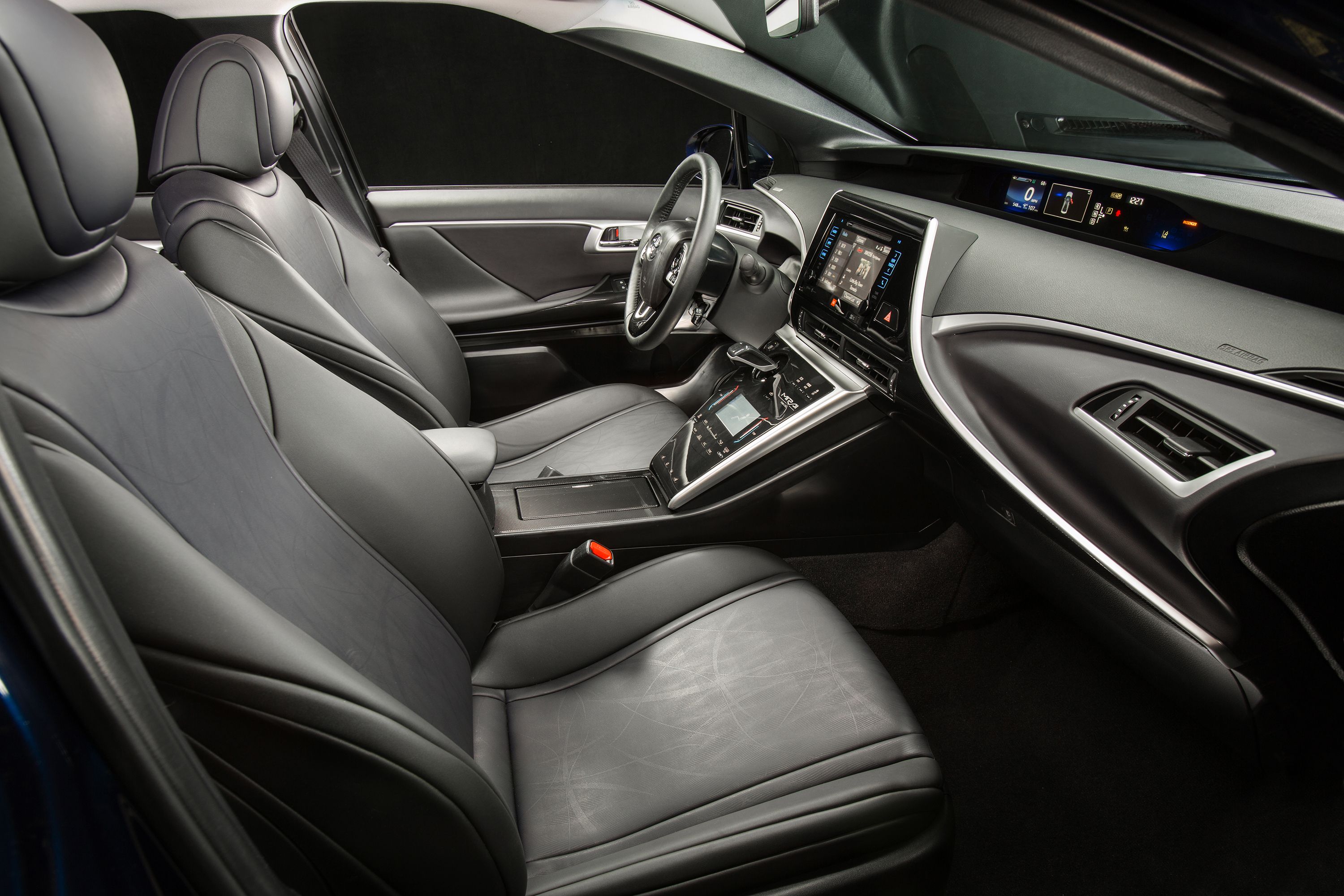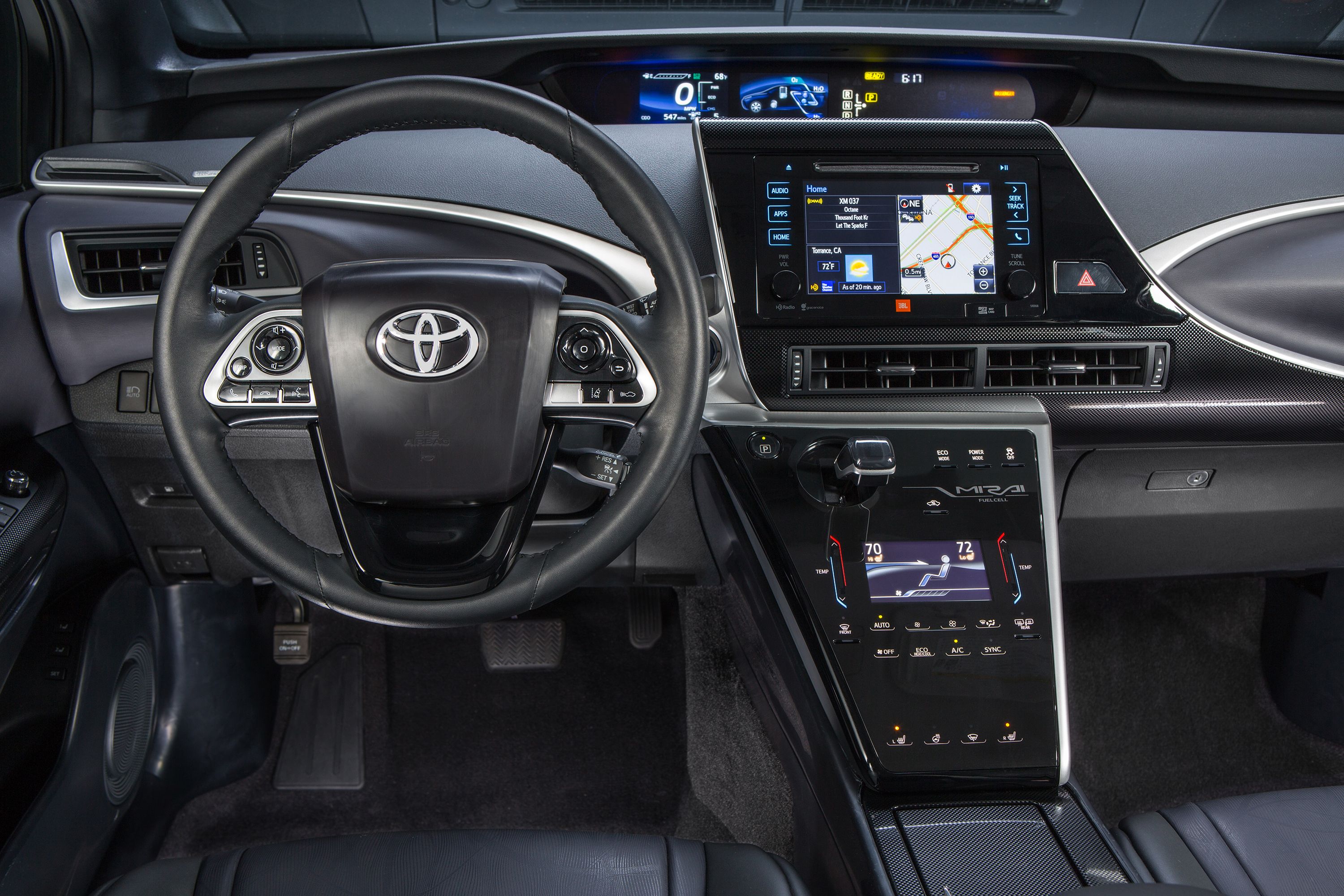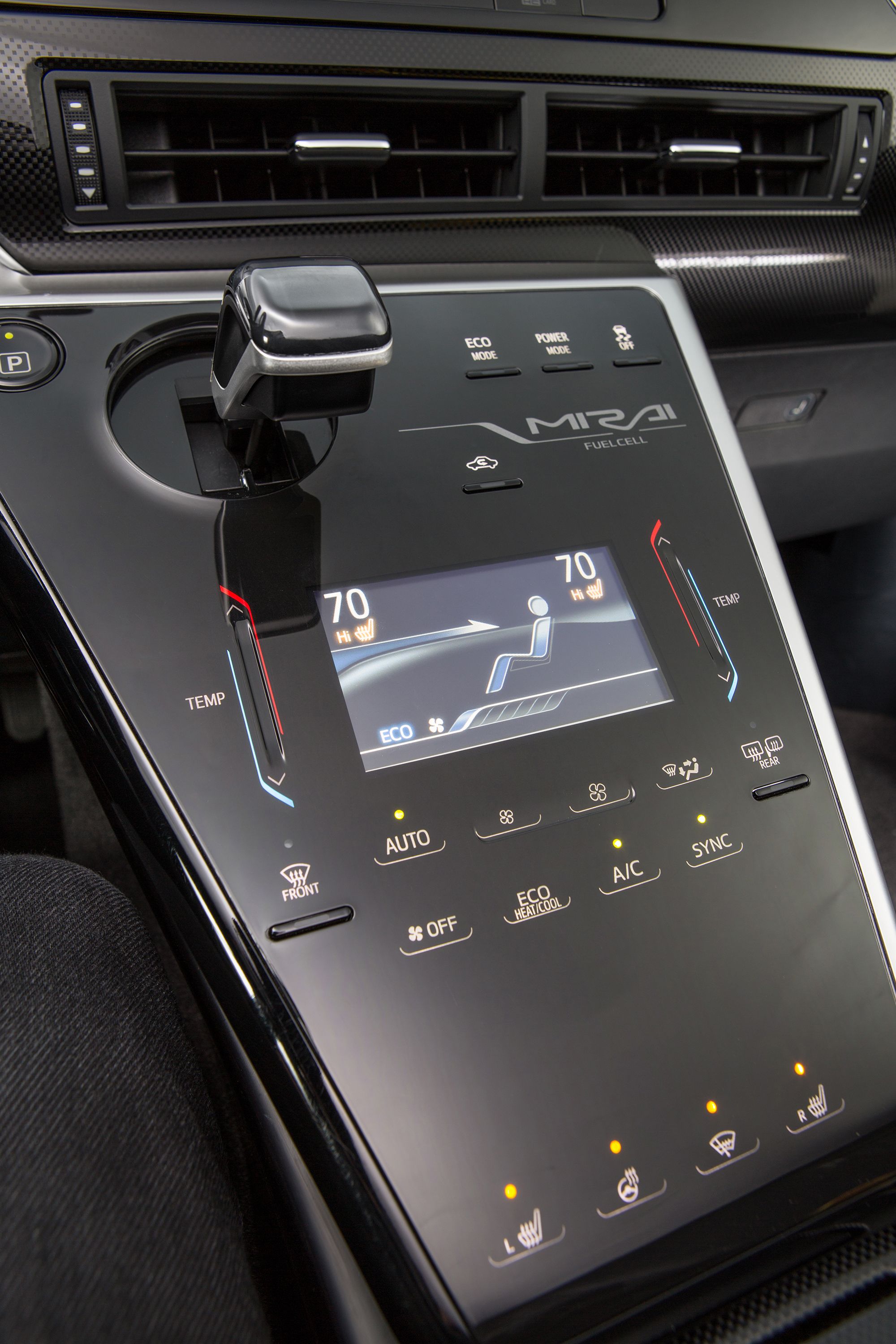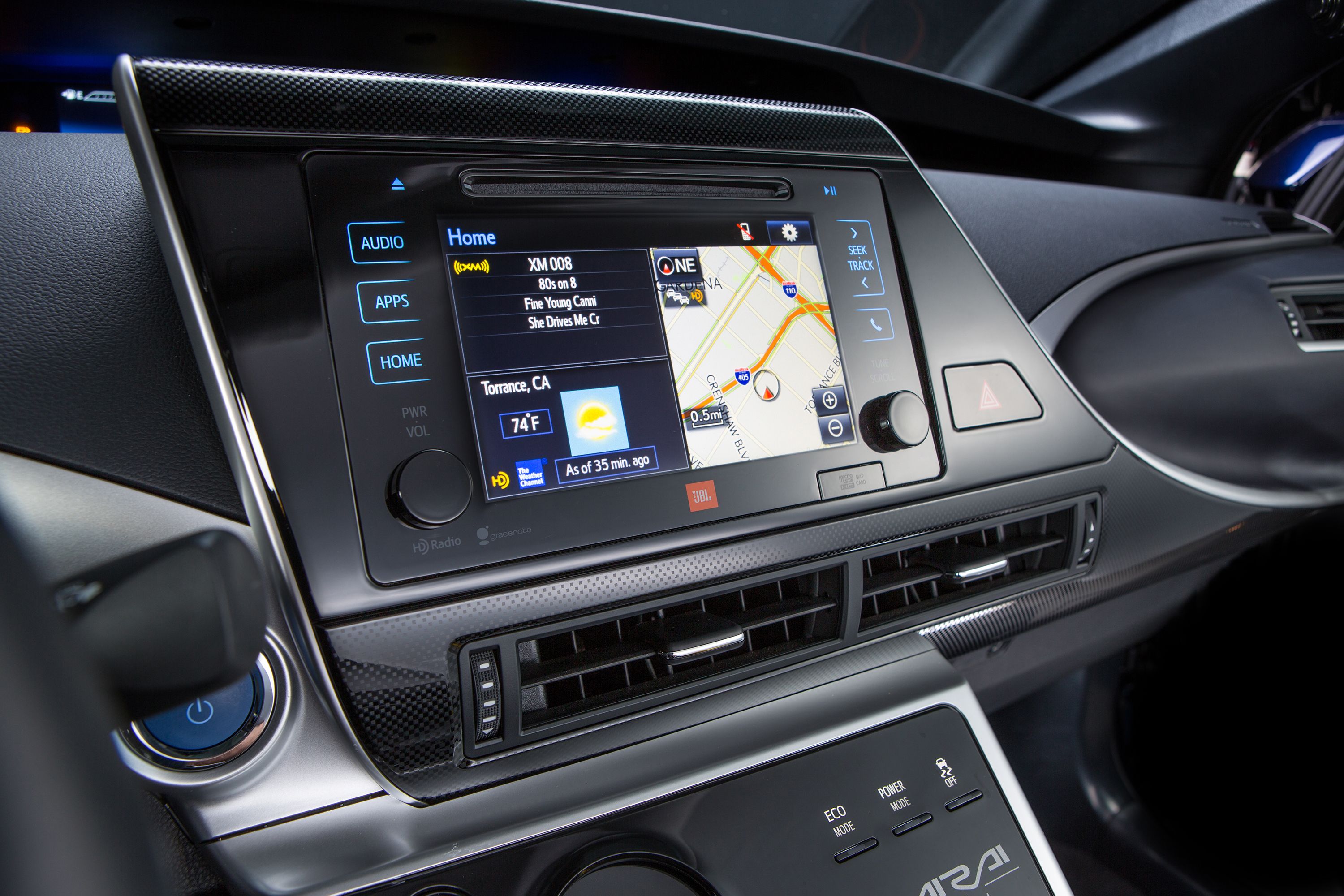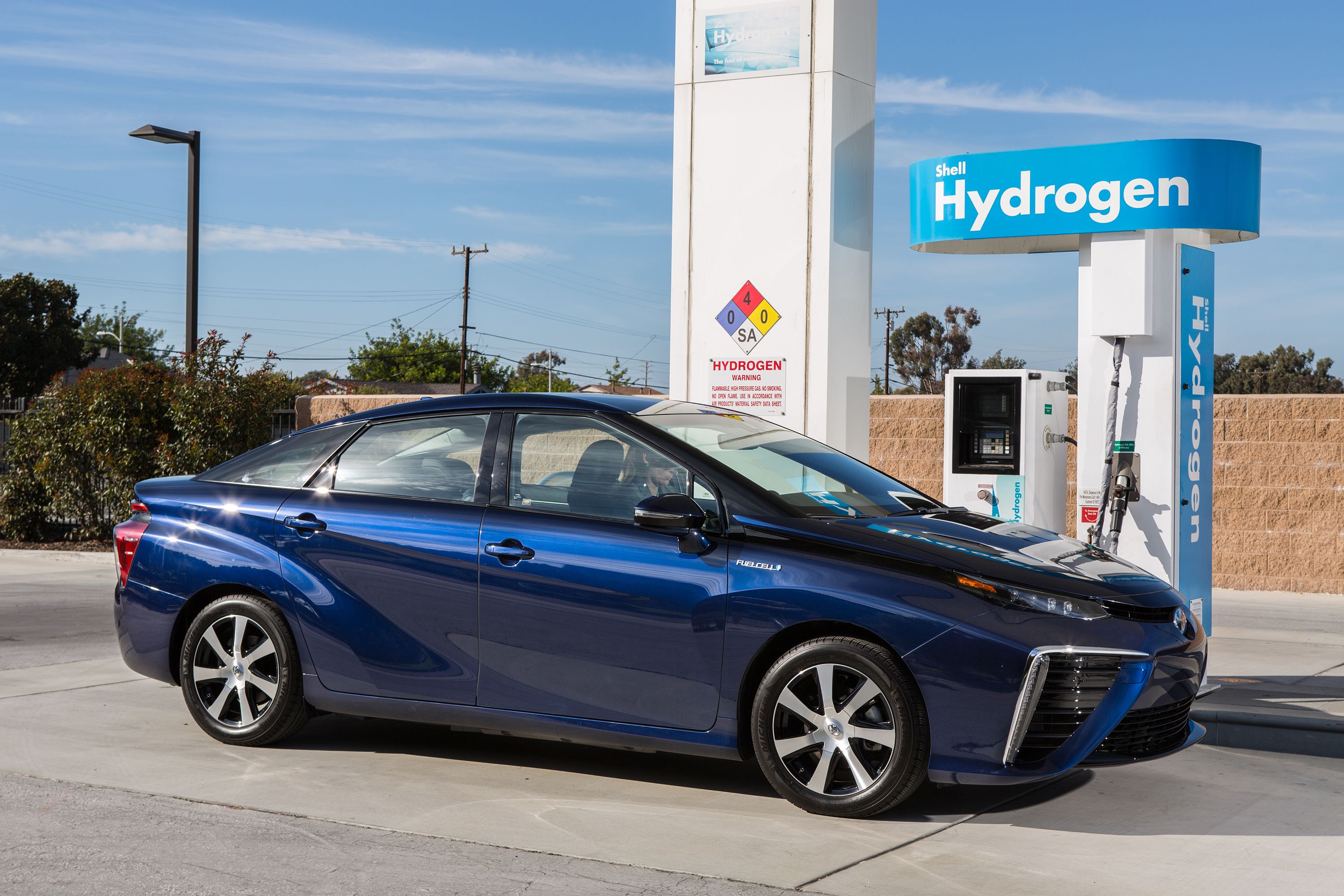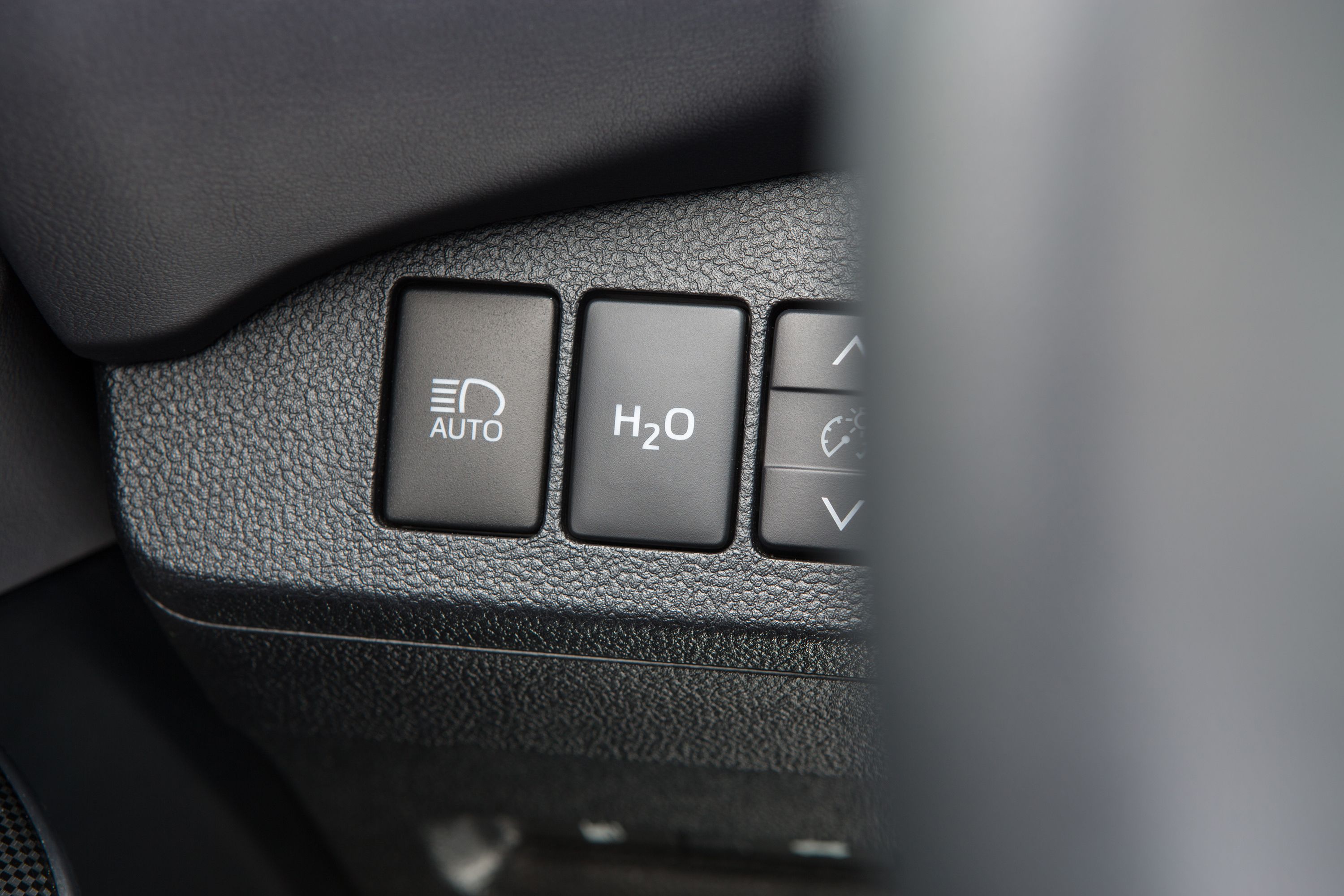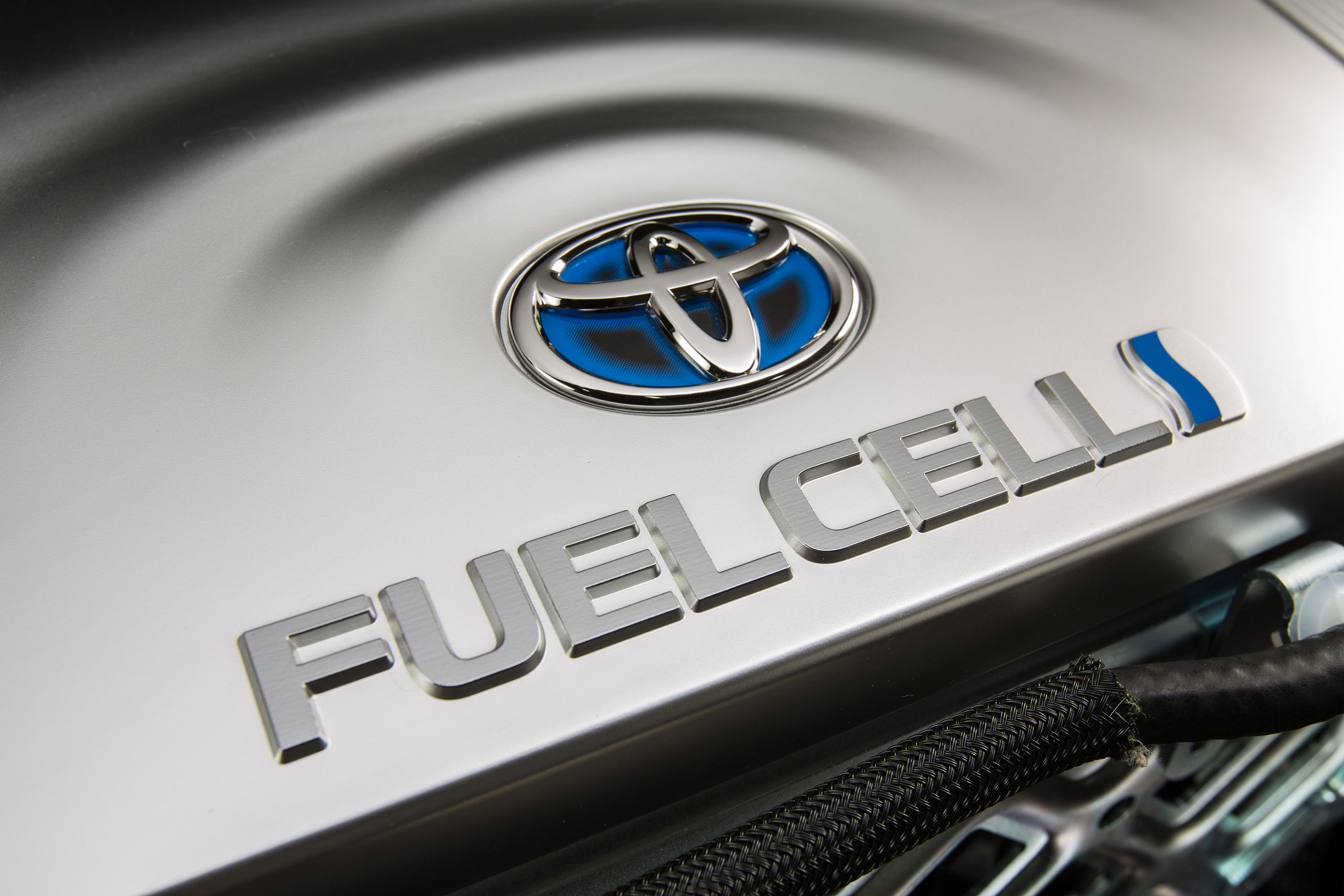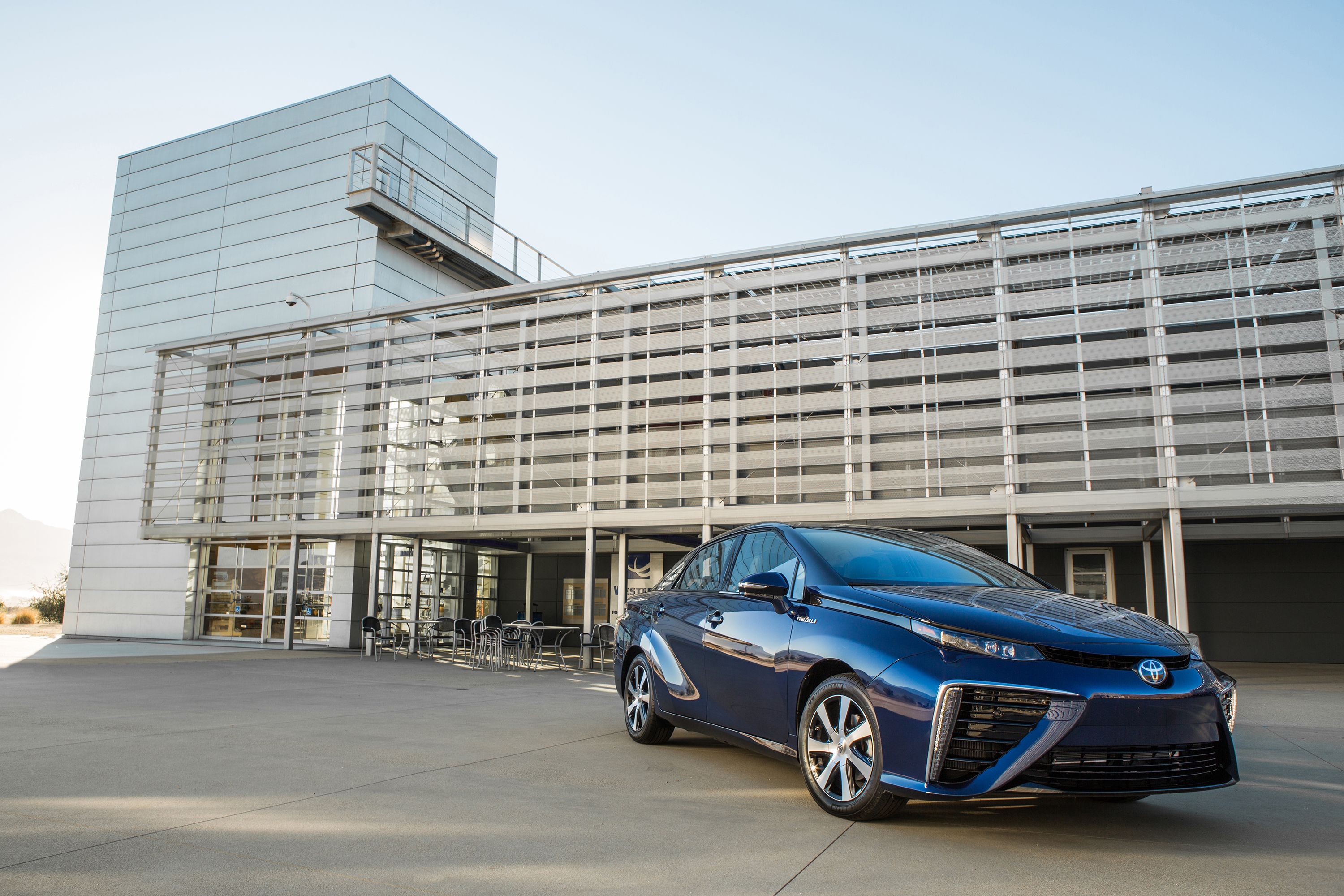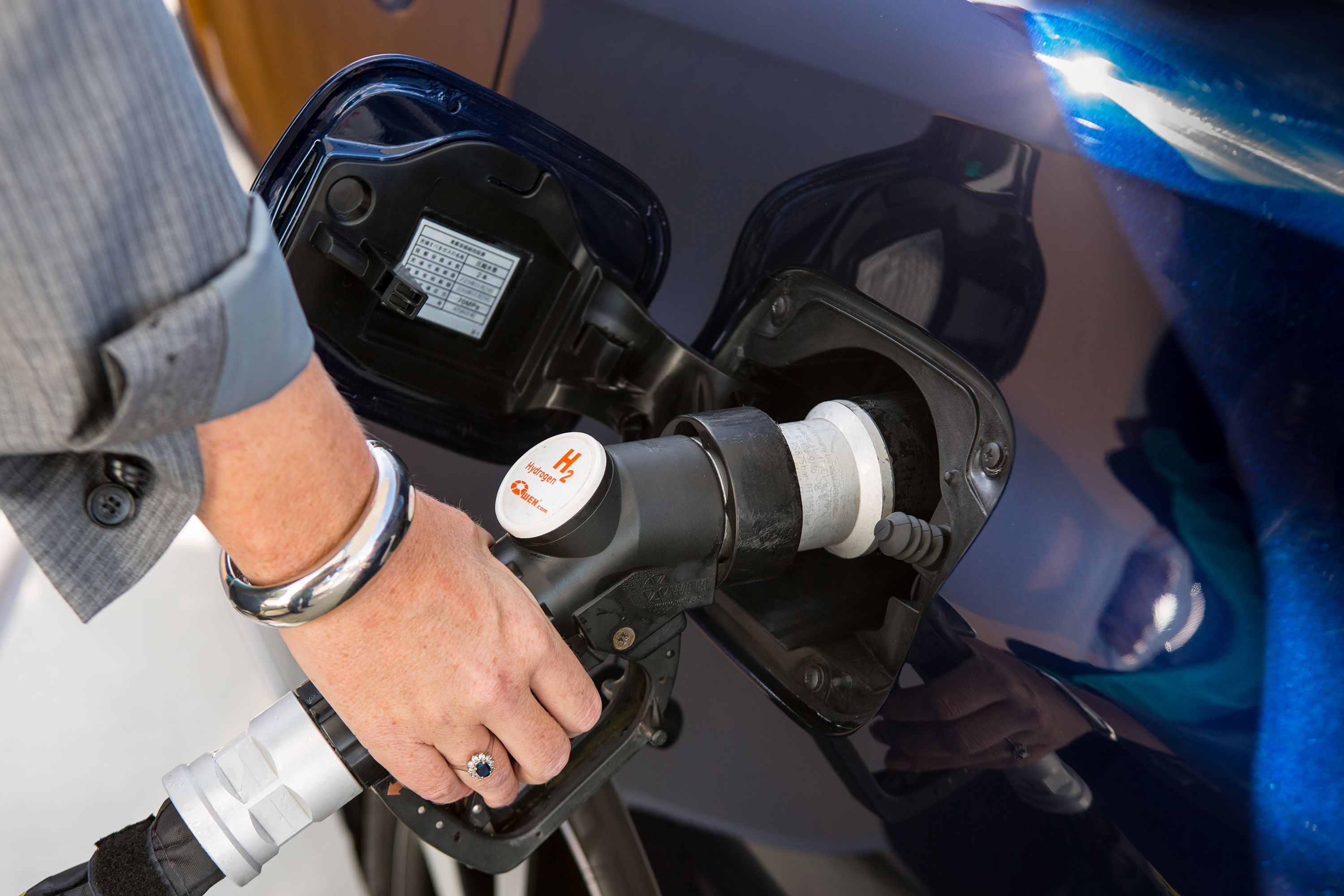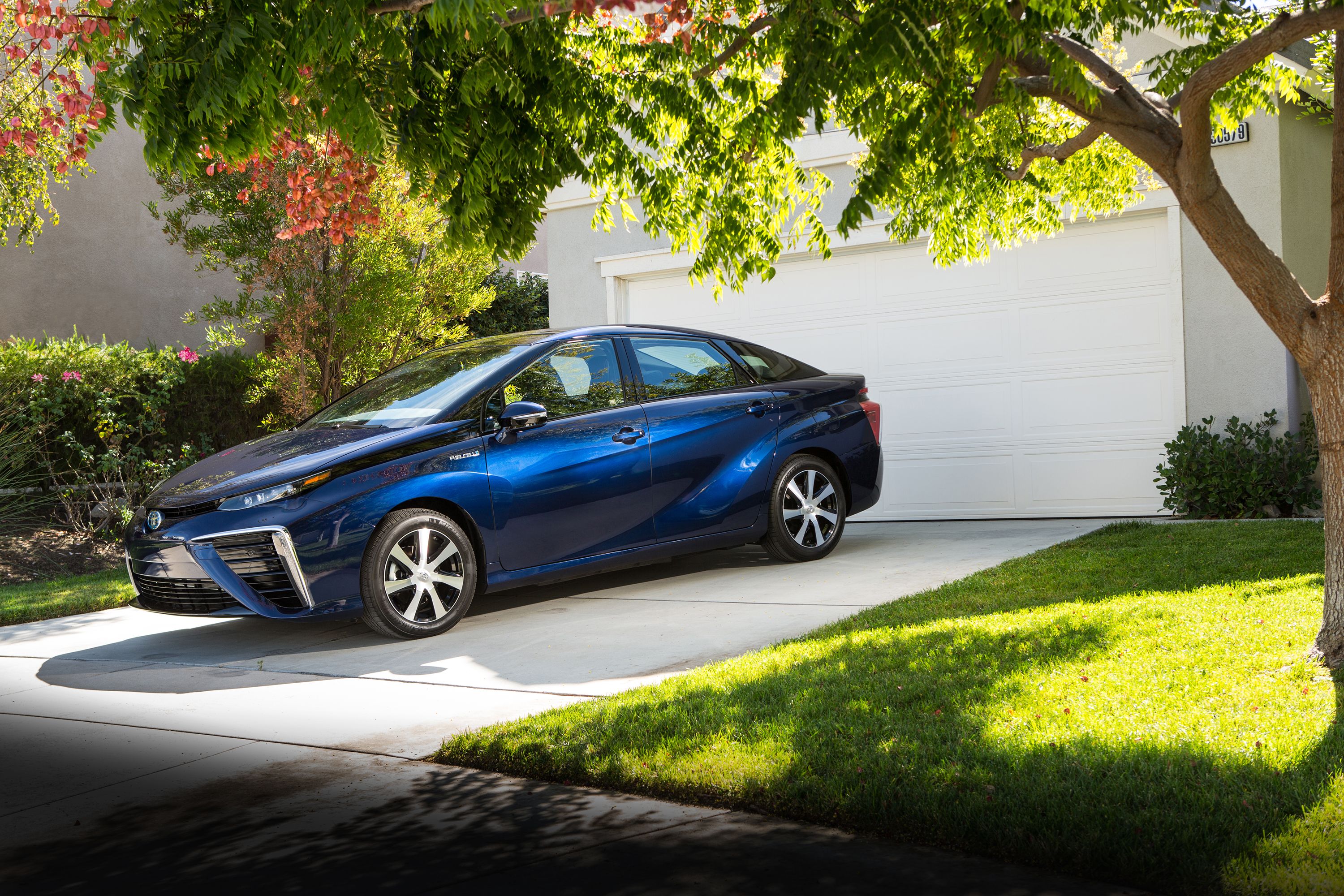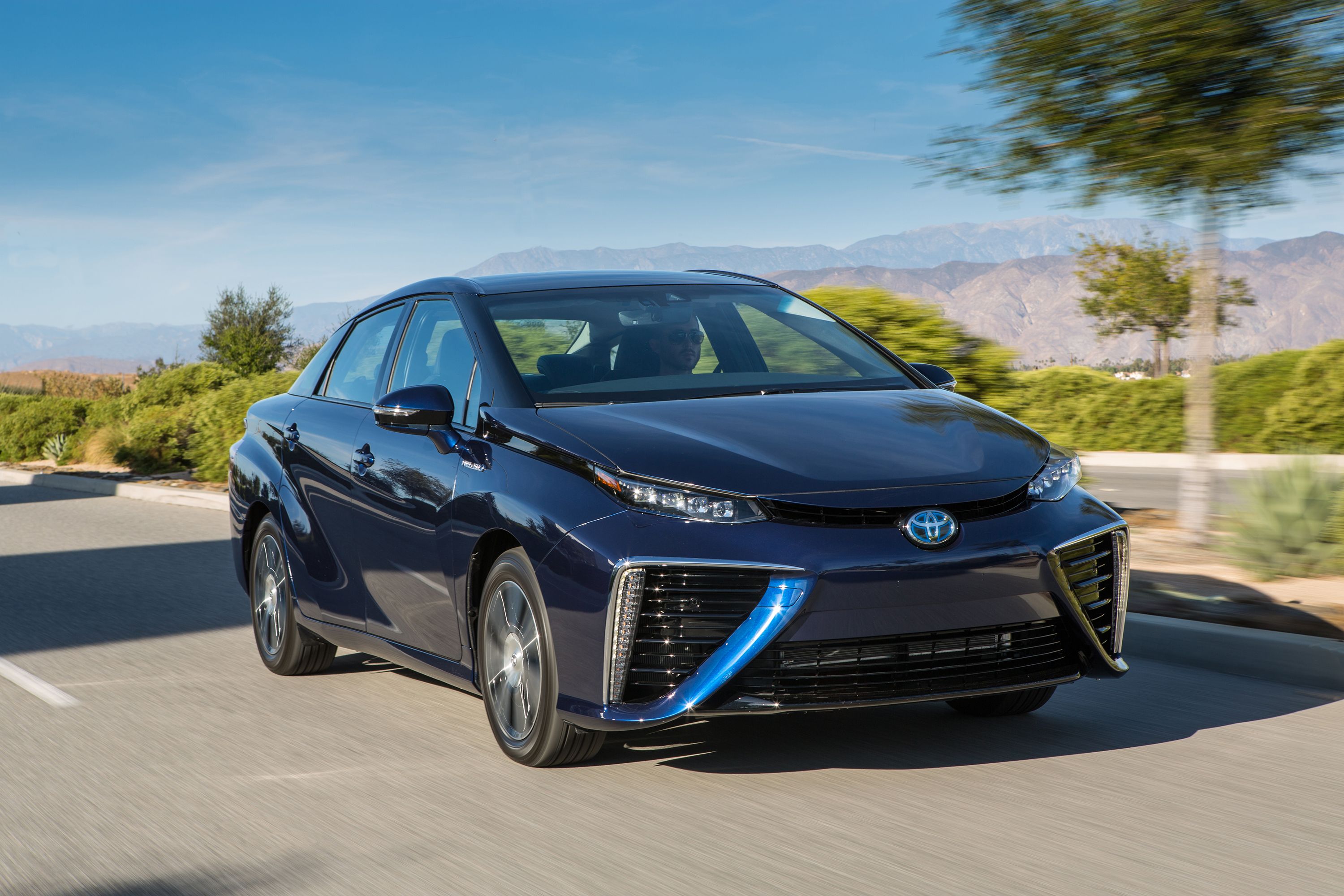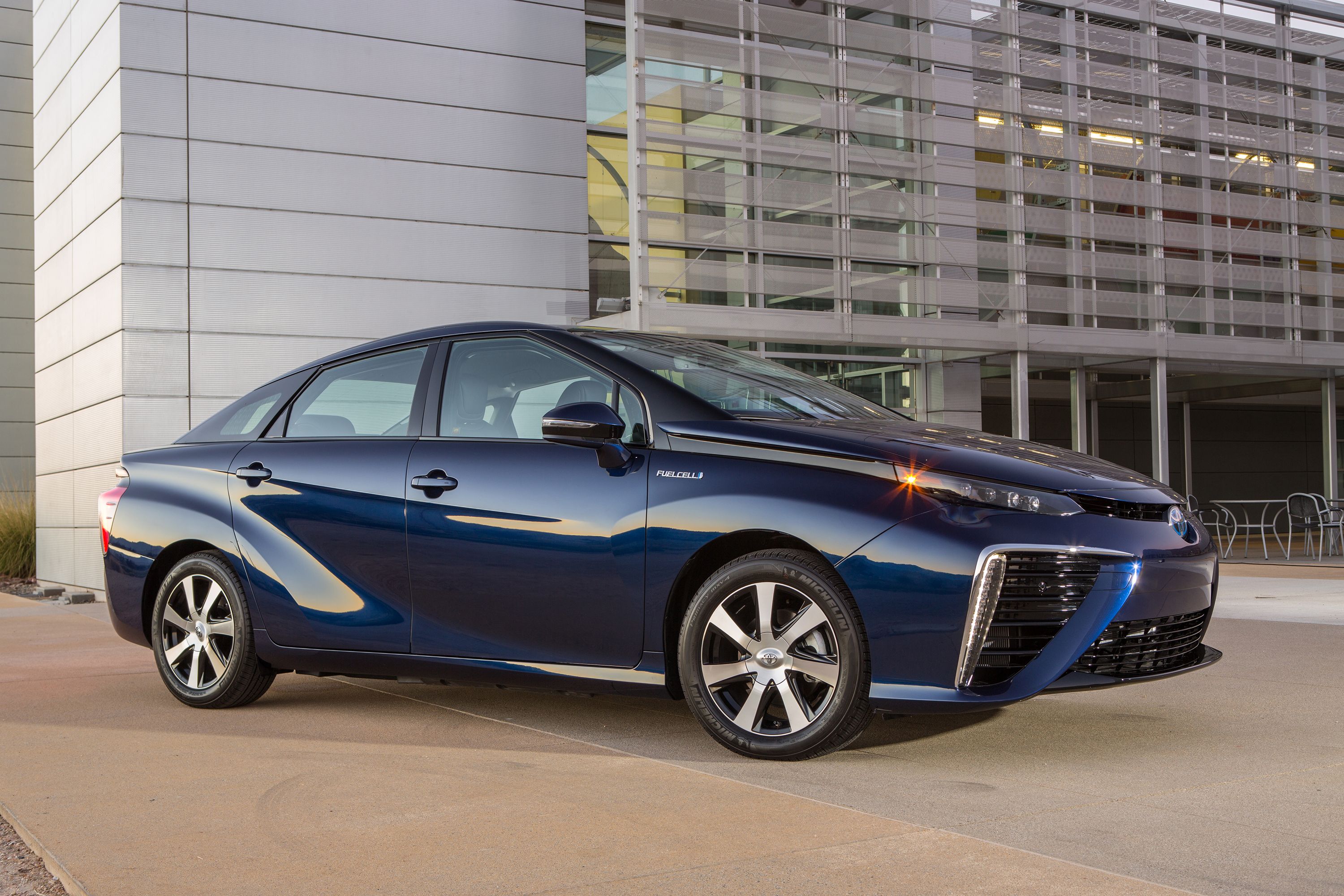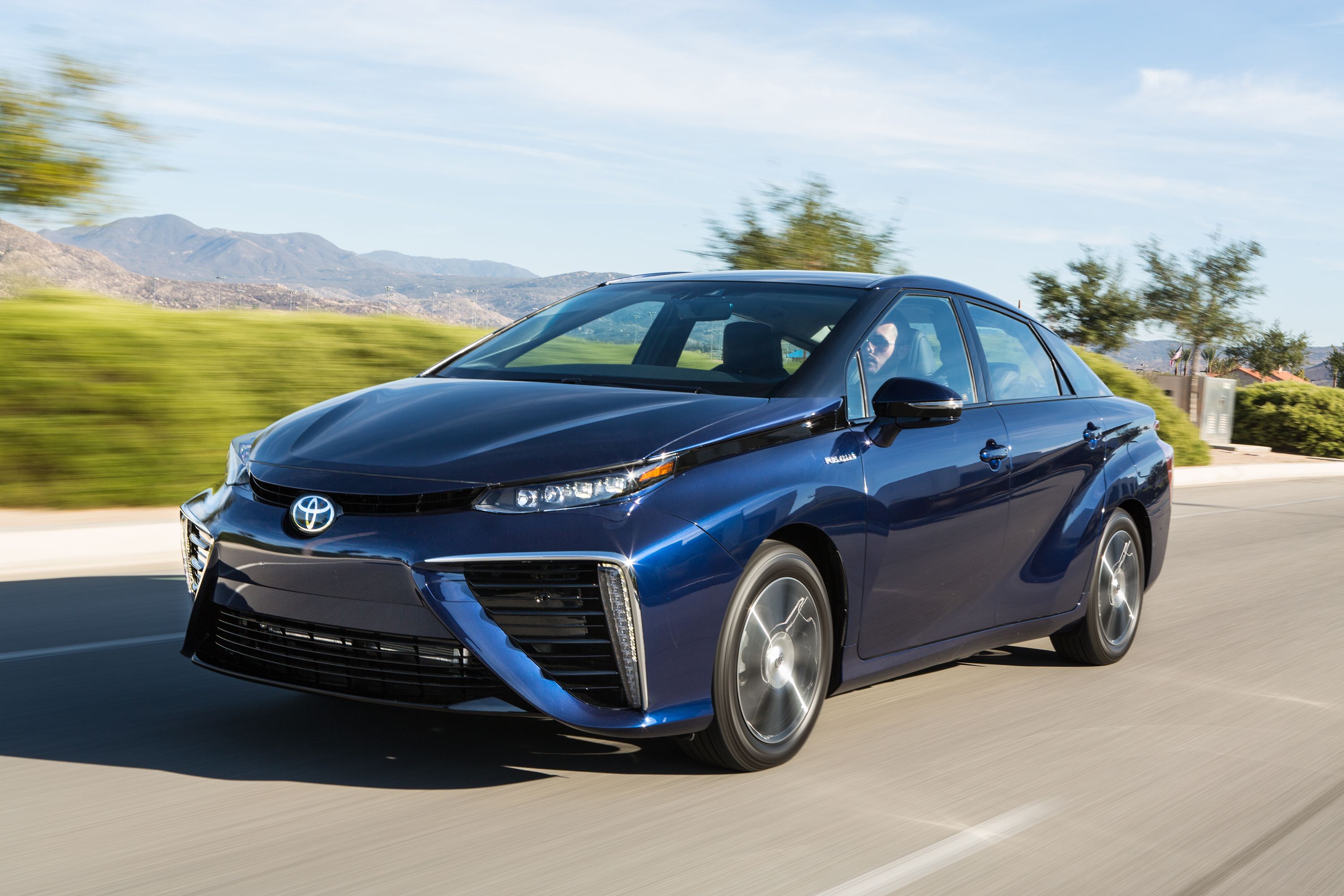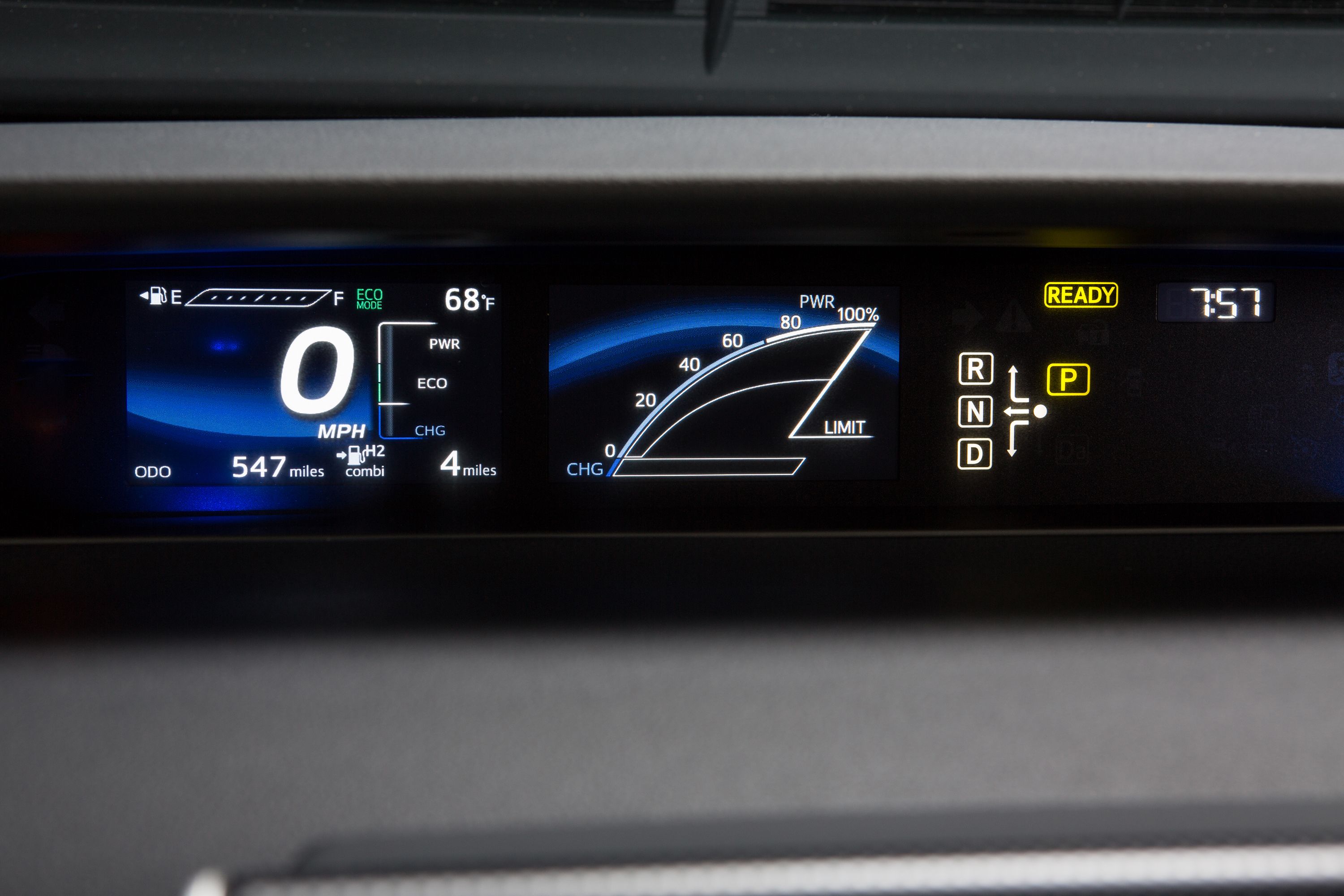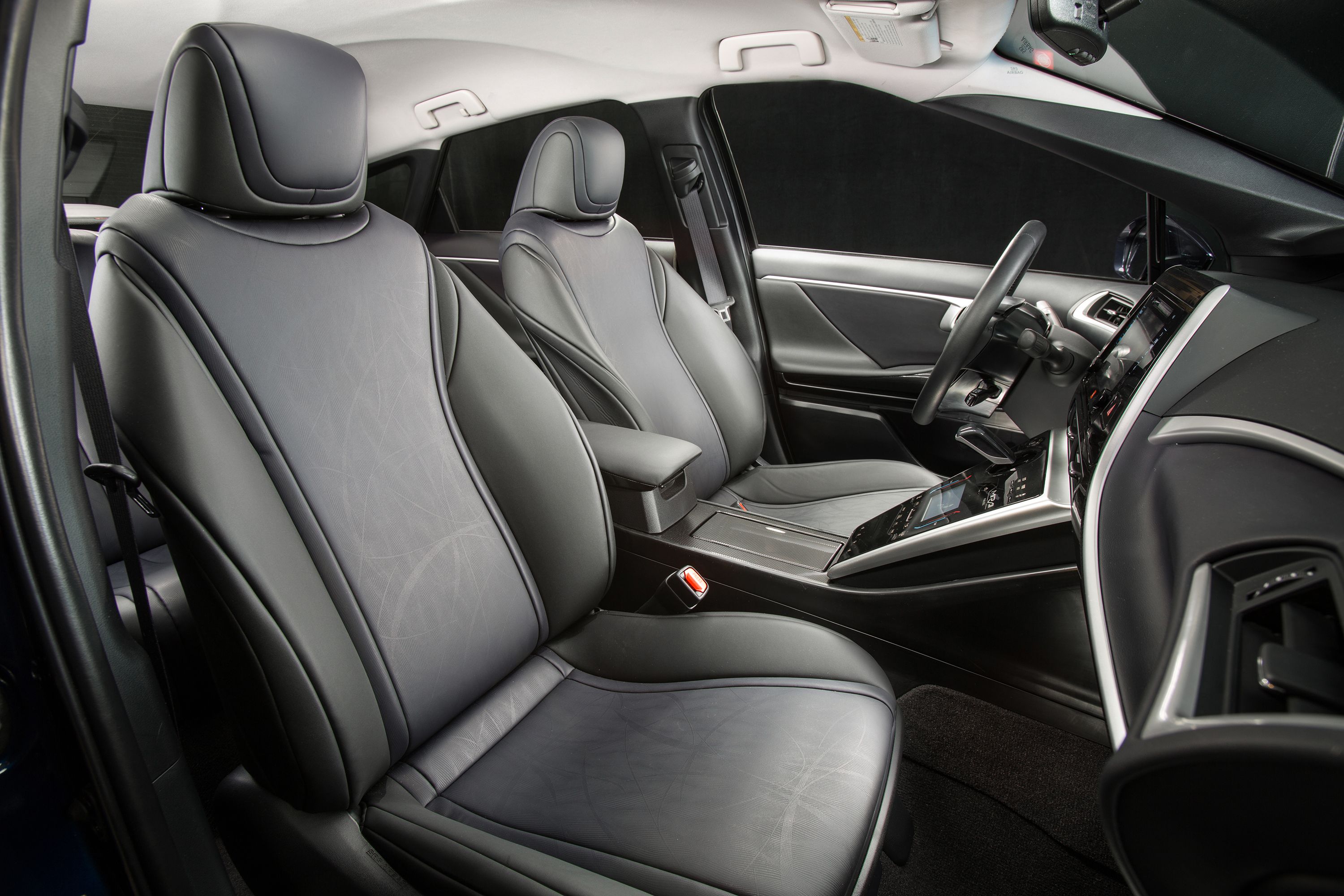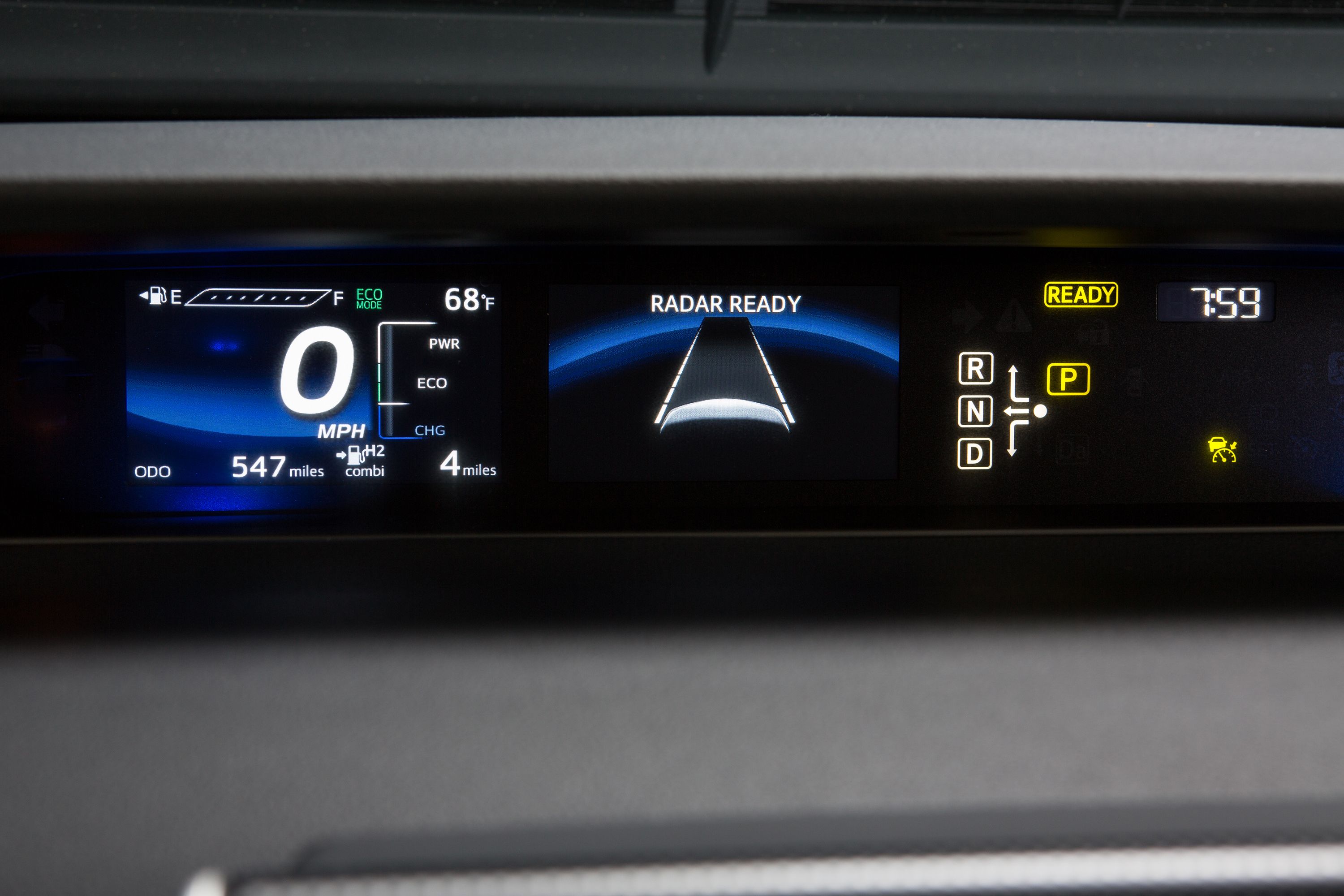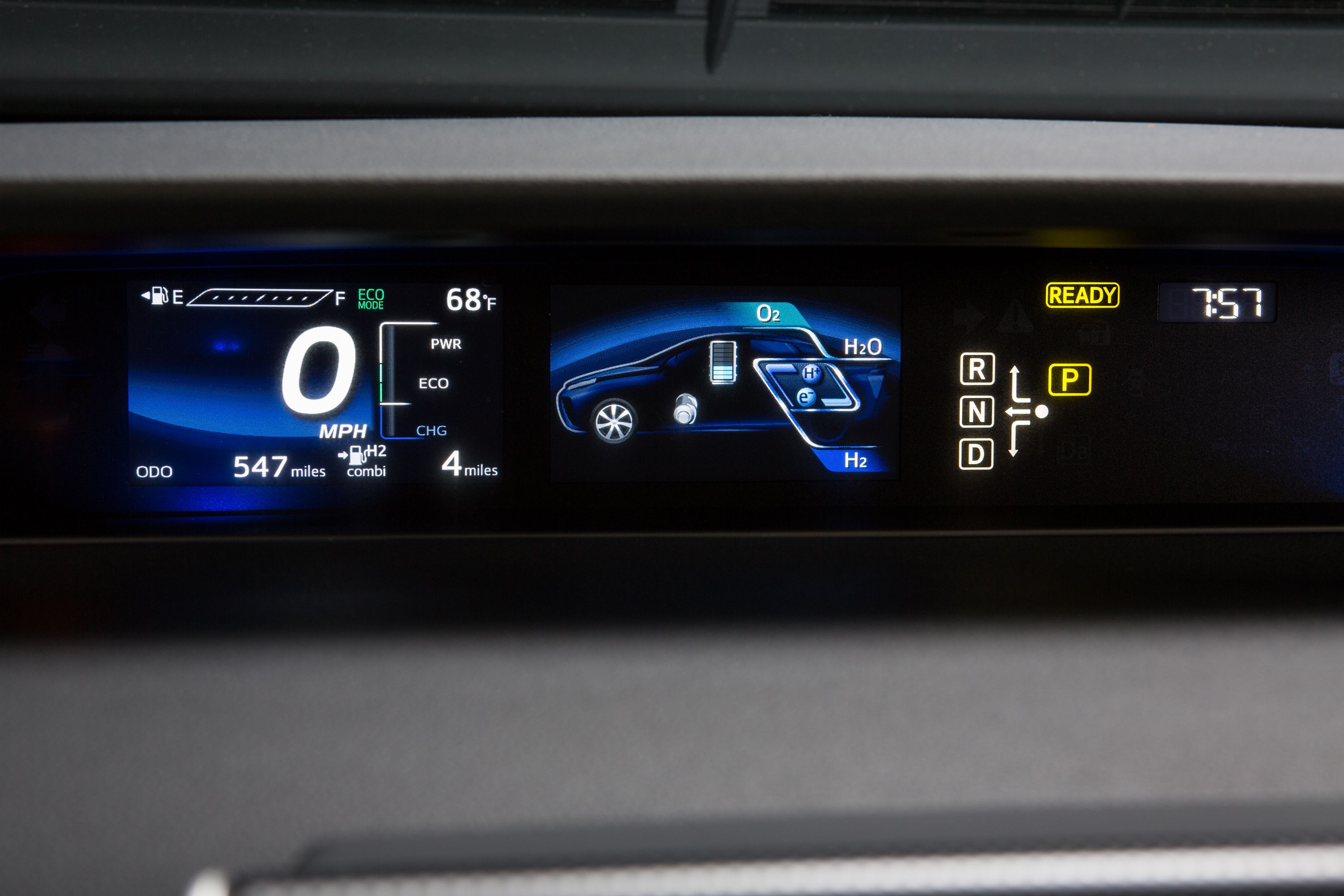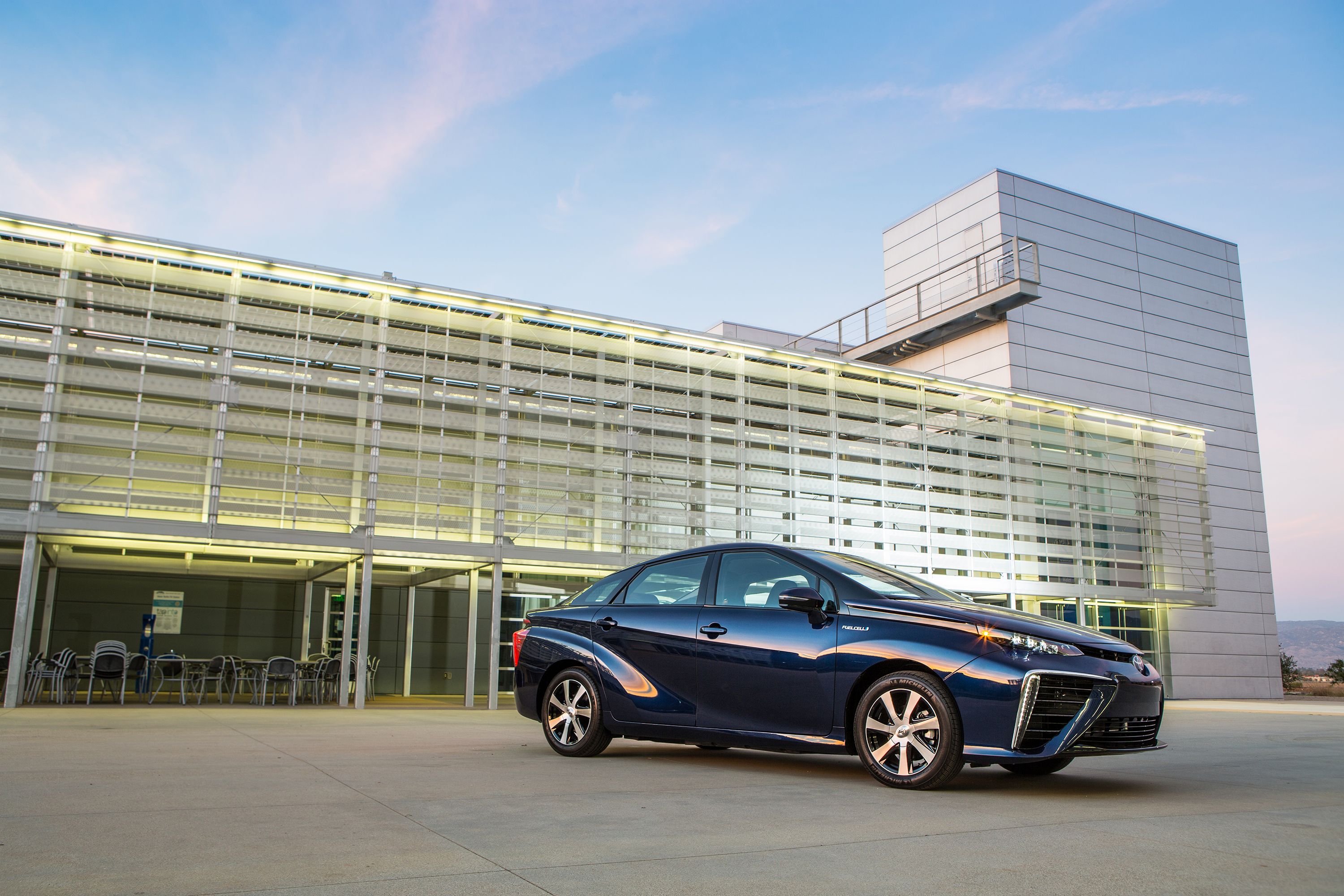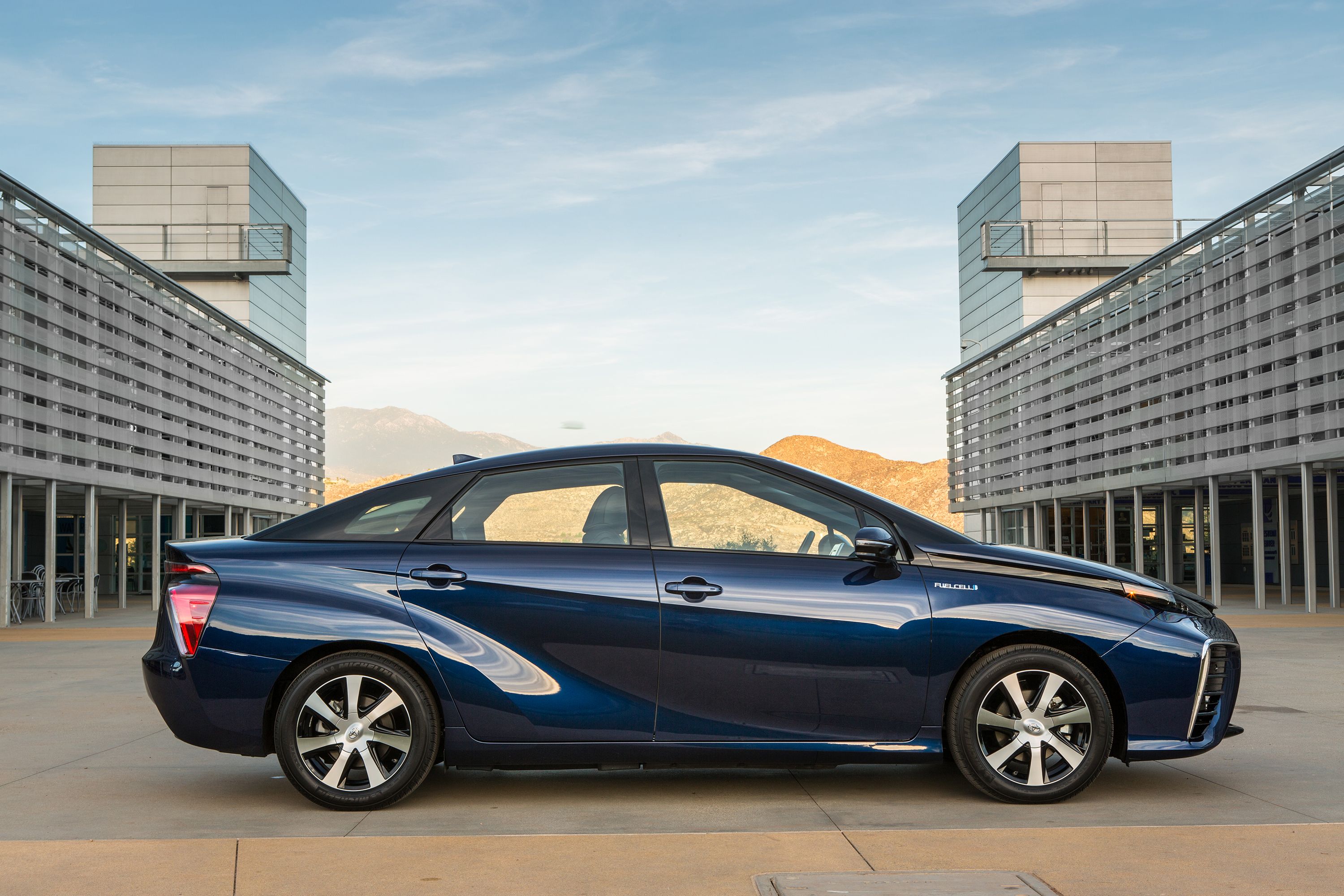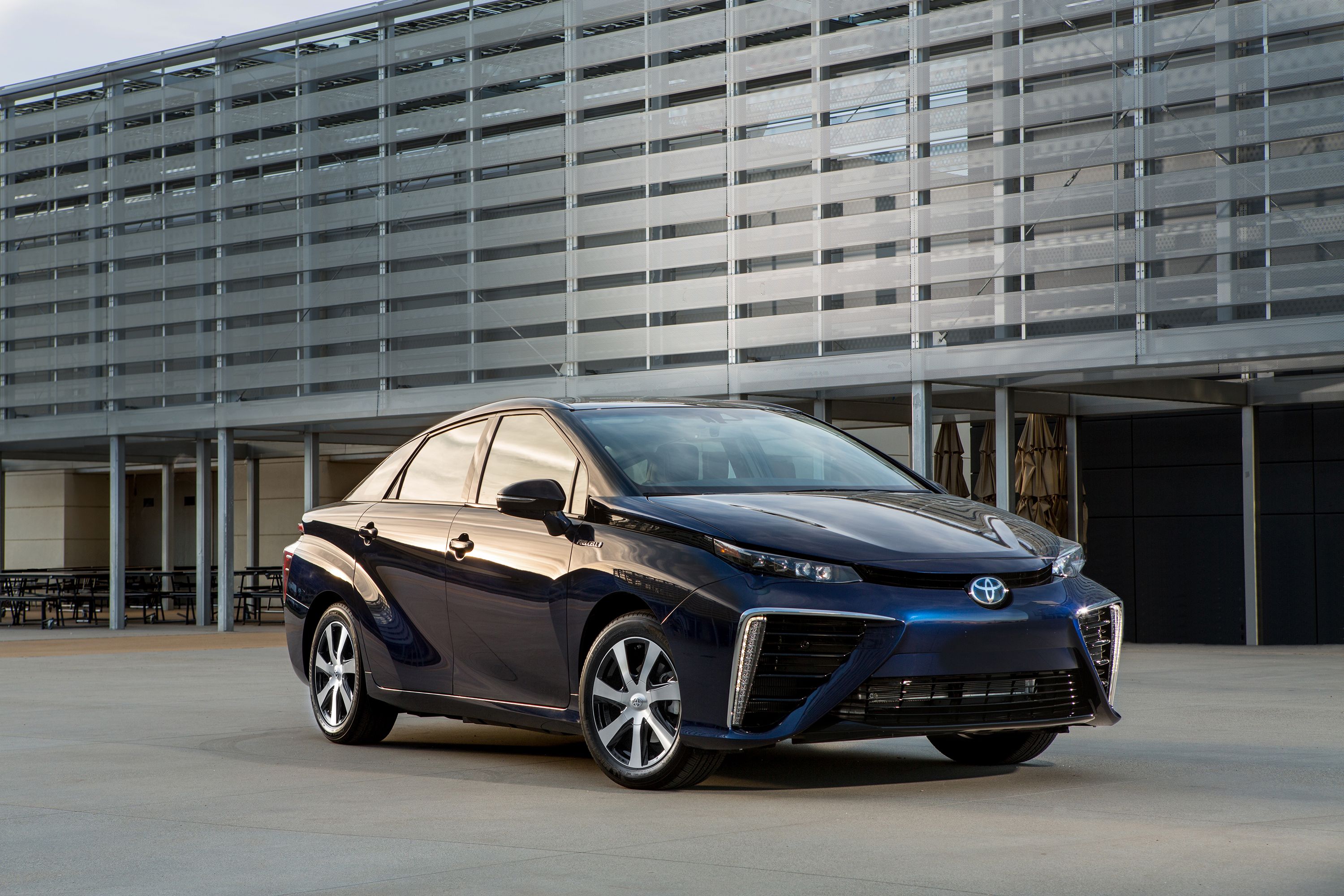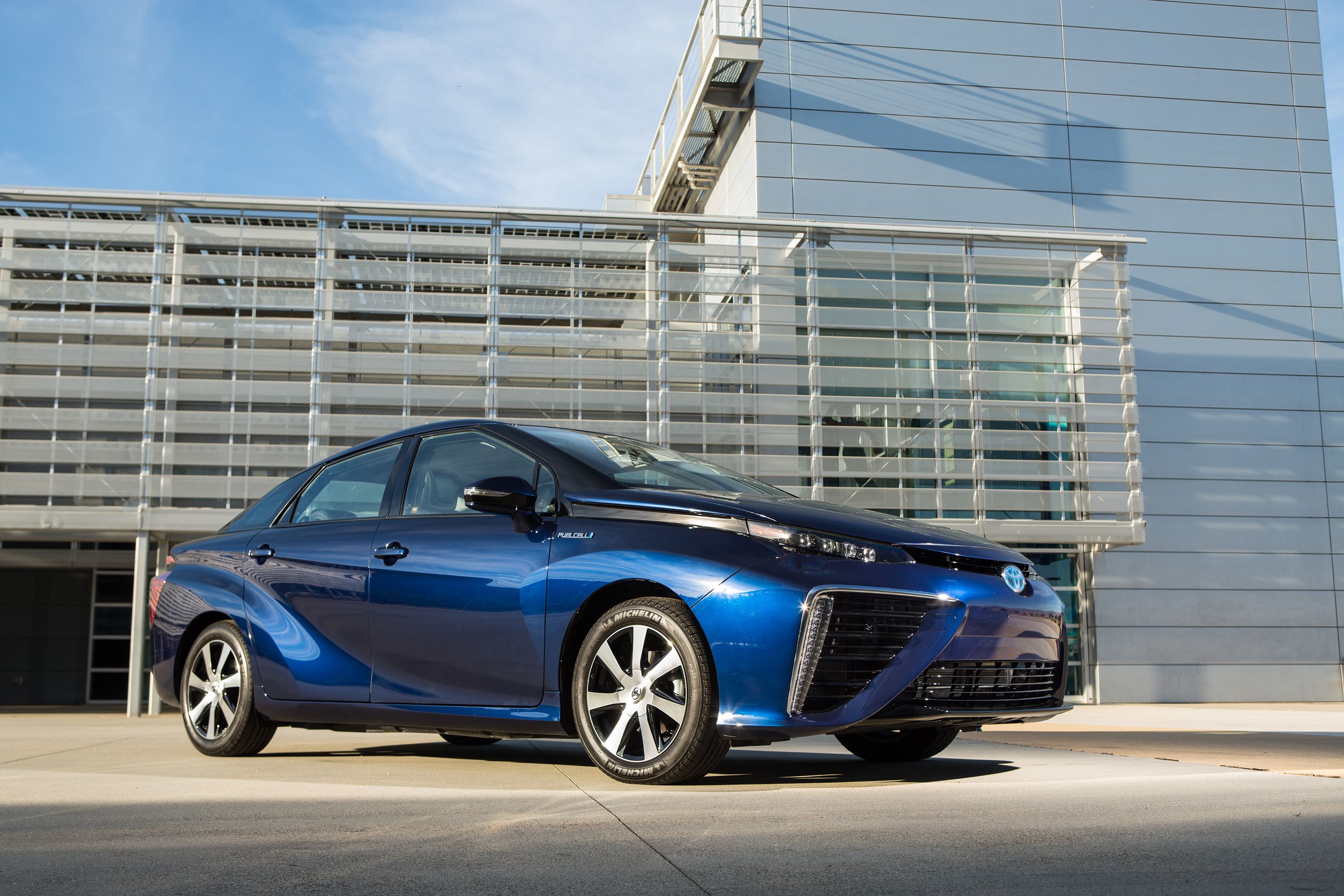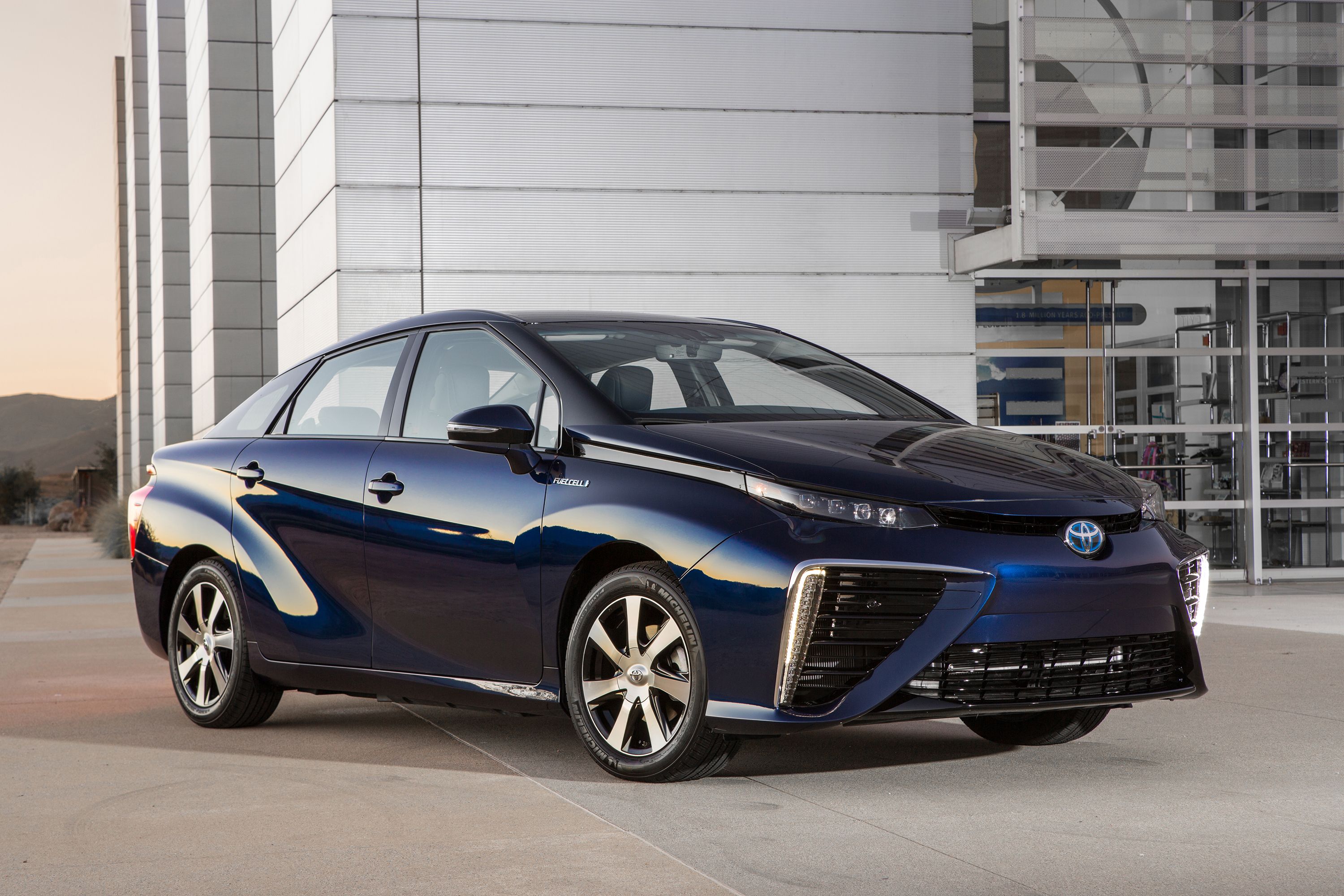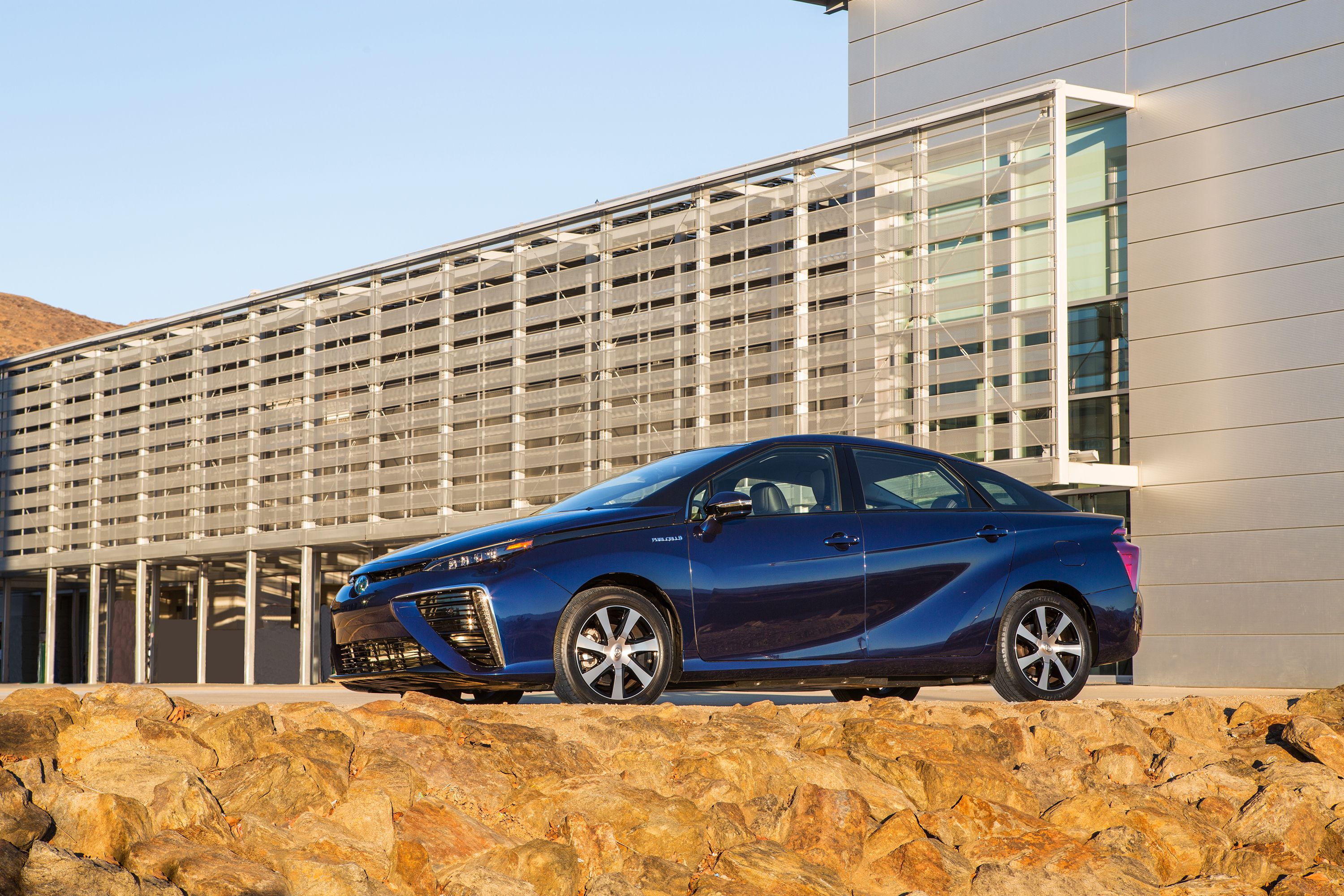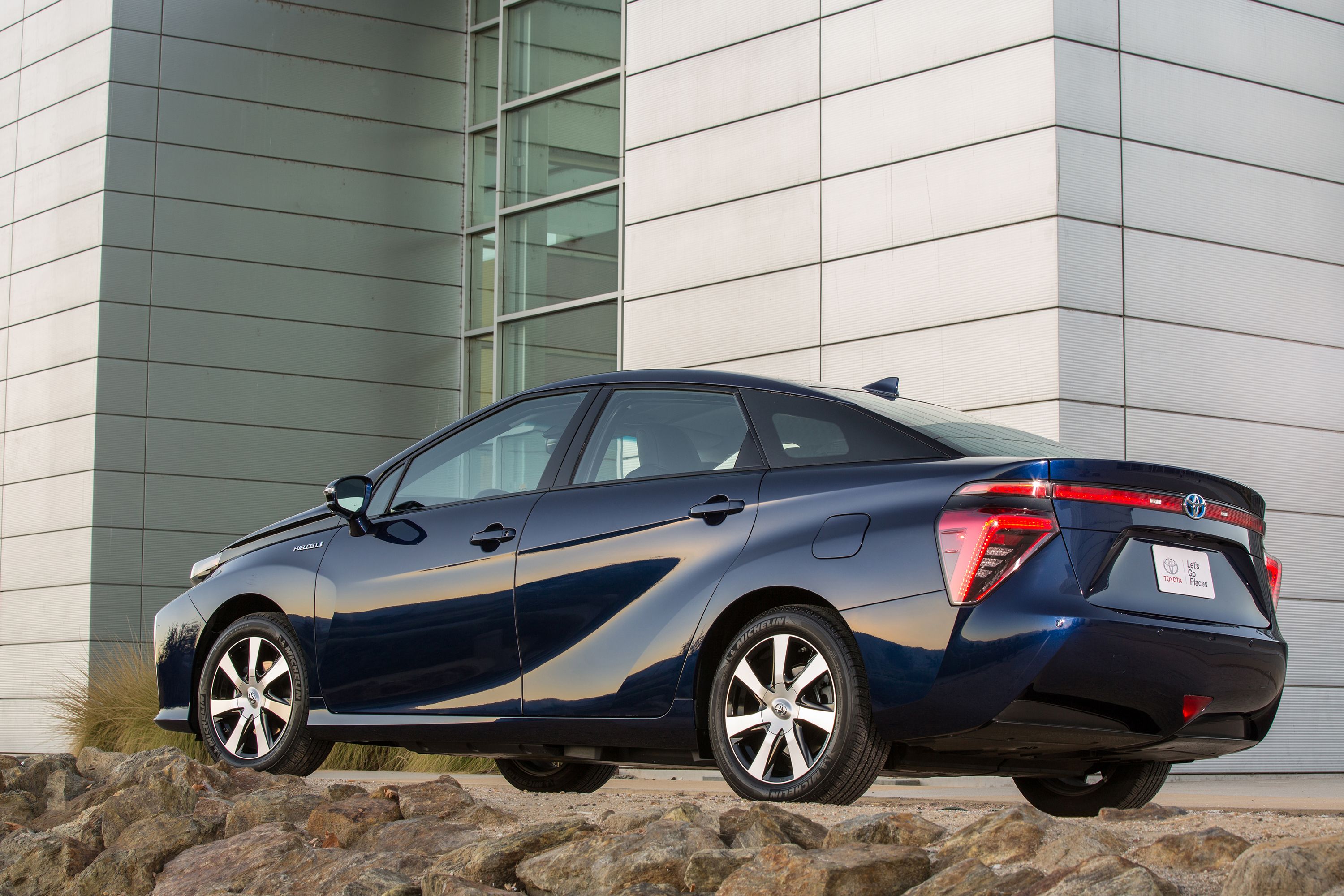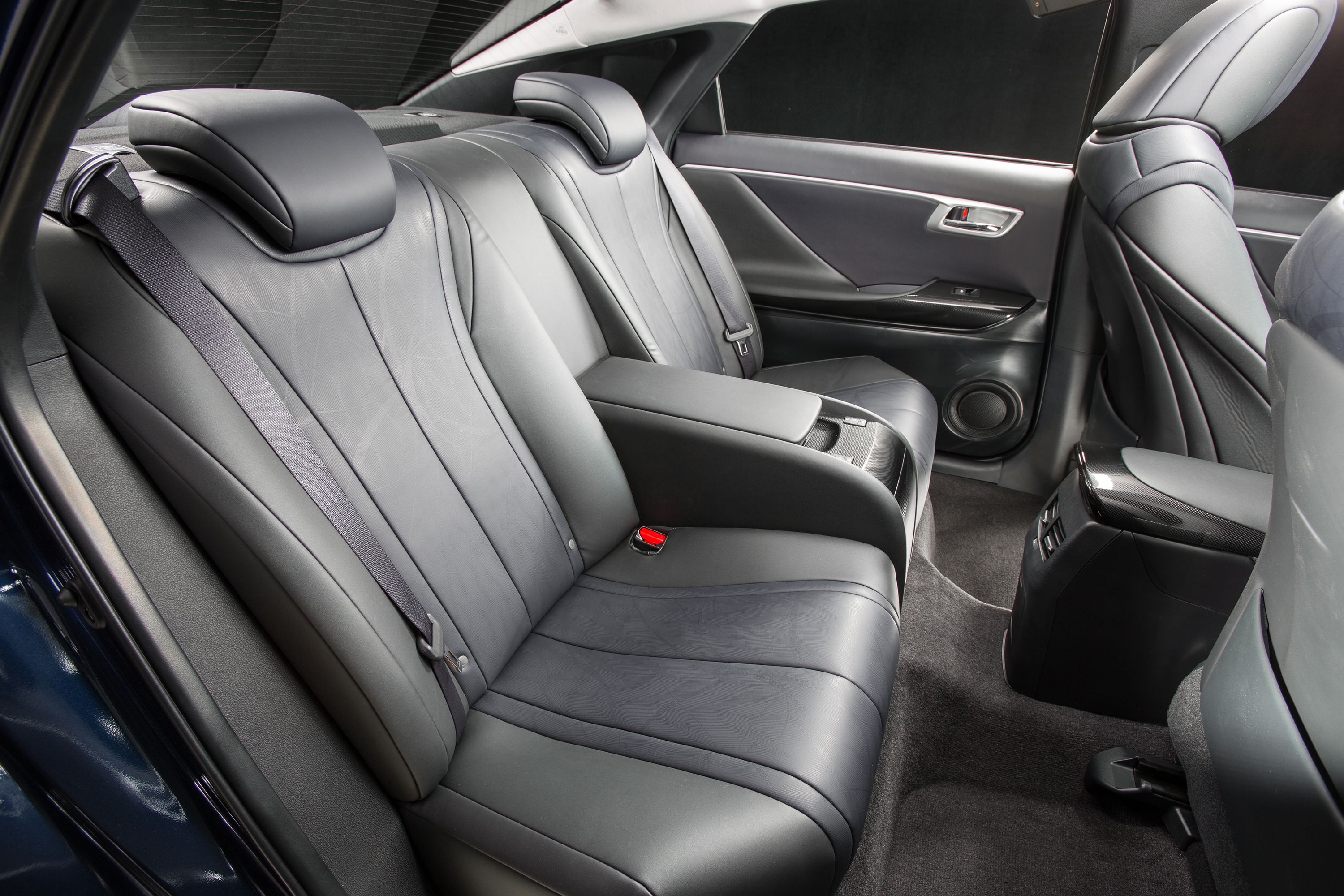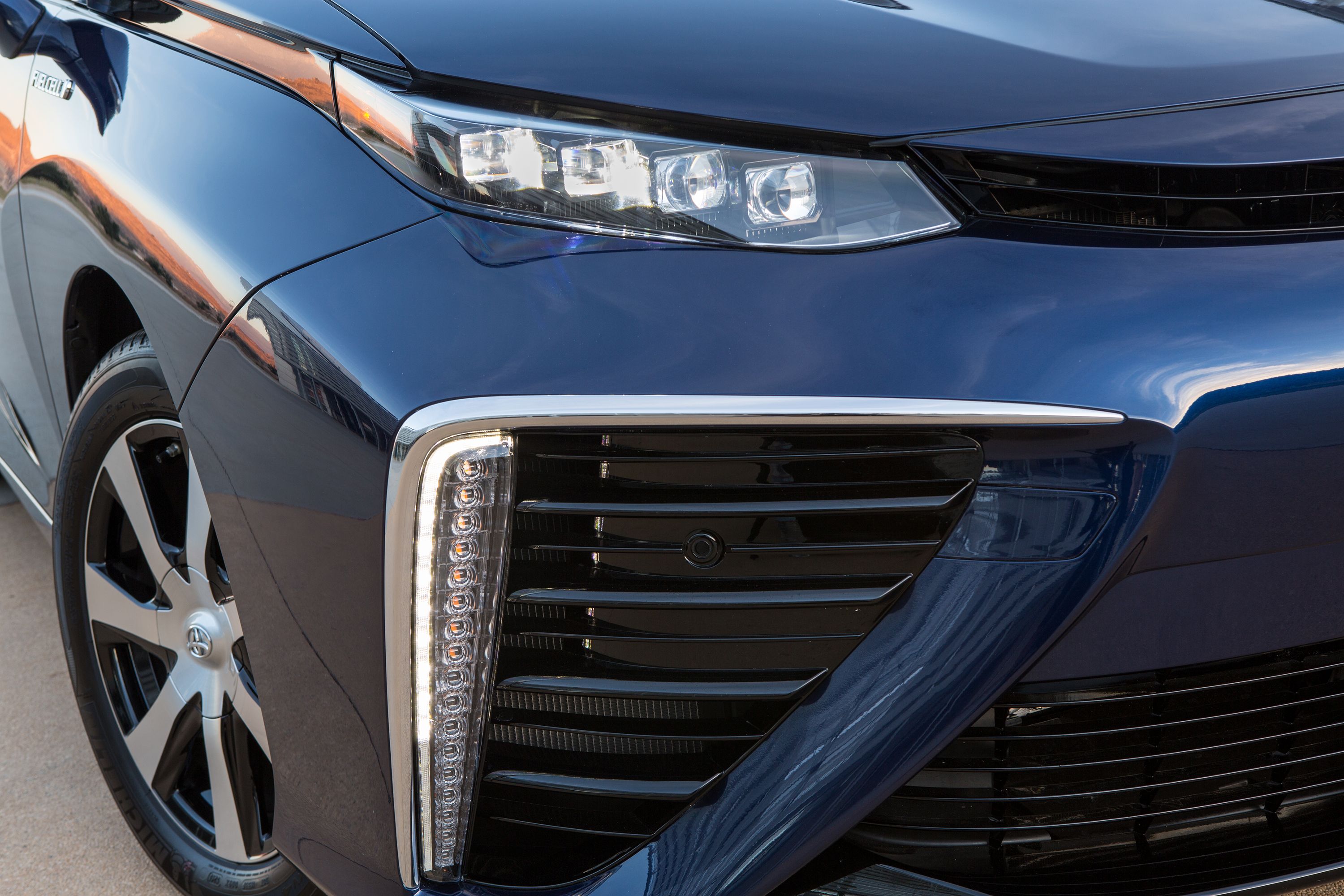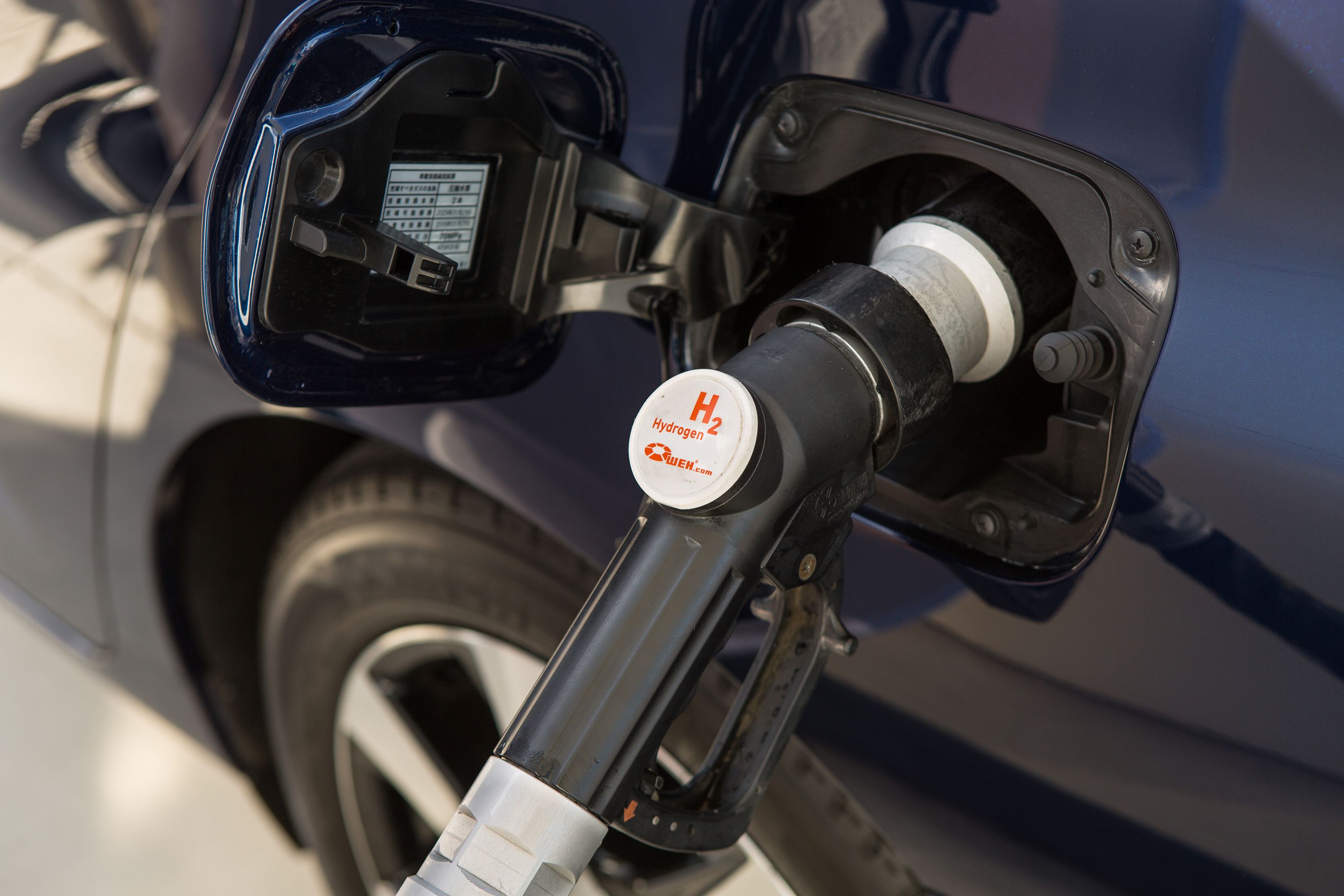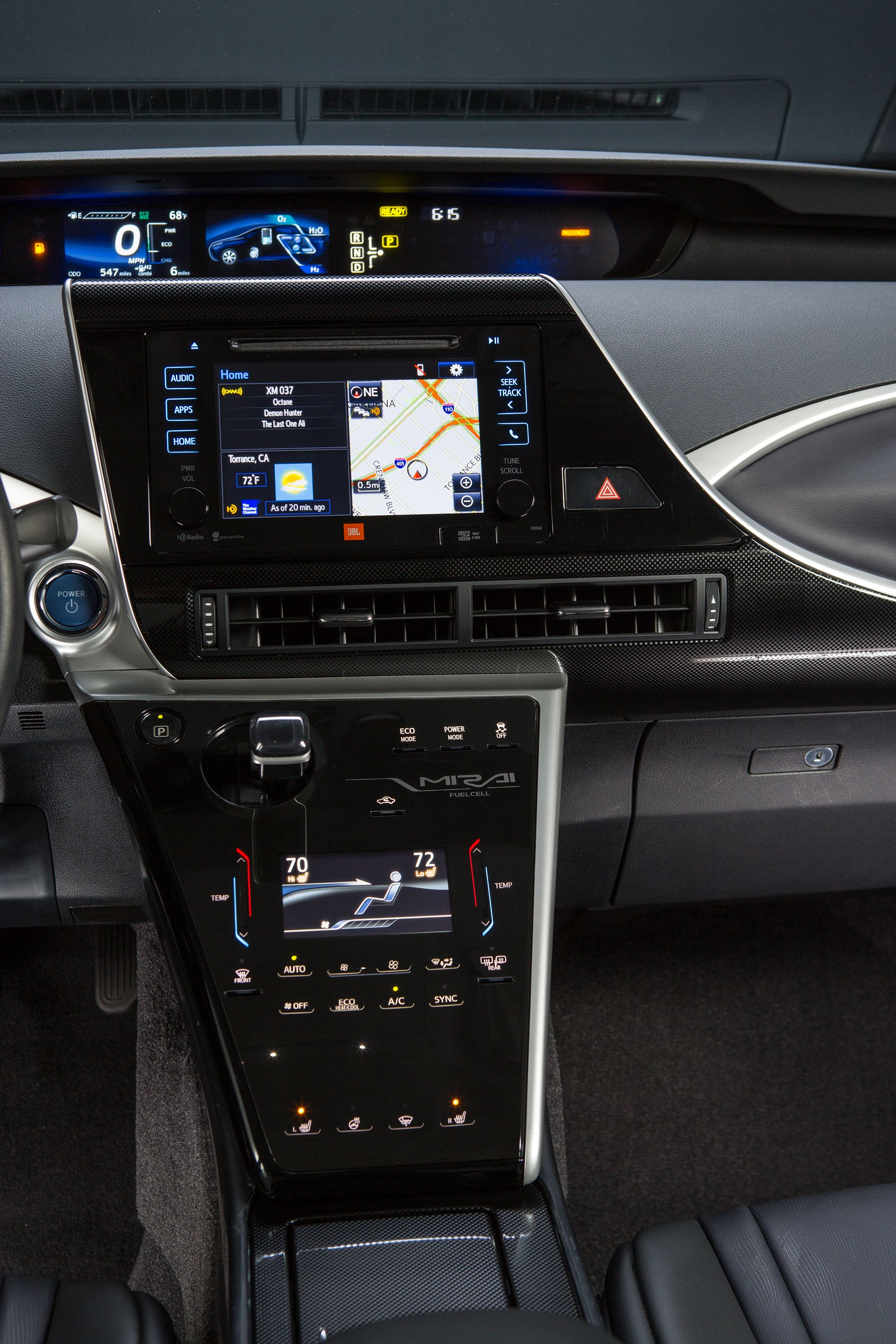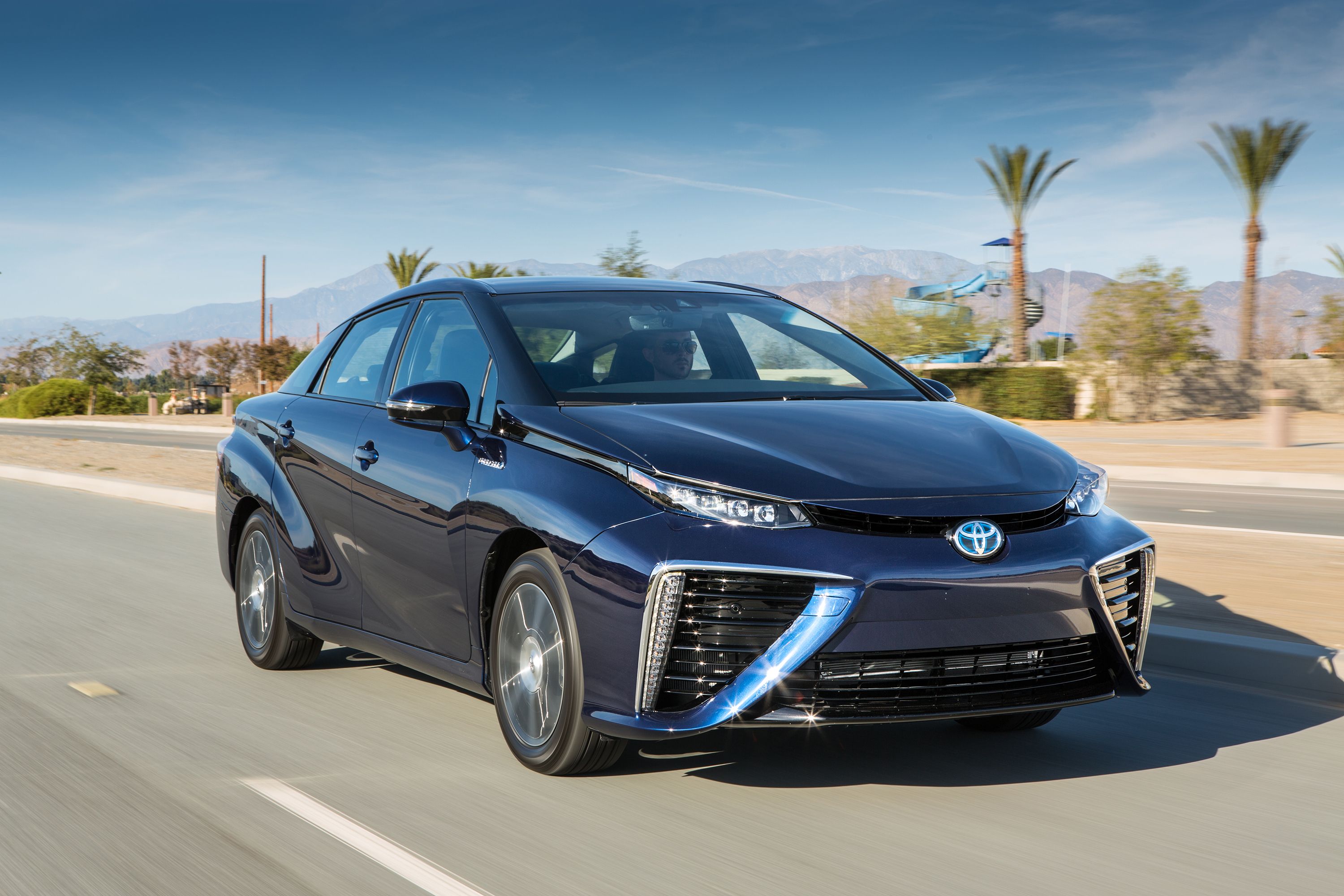Remember Toyota’s->ke88 hydrogen-powered FCV concept from the 2013 Tokyo Motor show->ke1834? It took a couple of years, but for the 2015 model year, Toyota released the production version of the FCV Concept called the Toyota Mirai->ke4985. In short, the Mirai is a sporty looking car that has an electric drivetrain and is powered completely by hydrogen. Currently only available in certain locals that have hydrogen fueling stations, the Mirai can achieve up to 310 miles per tank of hydrogen and emits nothing but a little H20 from its “exhaust” pipe. For being the best of its kind at this time, the Mirai has a respectable amount of cargo room in the rear boot and features an upscale interior with a digital, center-mounted instrument cluster and a large touchscreen infotainment system. Priced at more than $50,000 here in the U.S. the materials and their fit and finish inside are comparable to that of a Lexus->ke47 or BMW->ke178.
When the Mirai made its official debut, Toyota also announced that it was unleashing a large campaign to start making hydrogen readily available for the masses. The brand has teamed up with hydrogen supplier Air Liquide to bring hydrogen to New York, New Jersey, Massachusetts, Connecticut, and Rhode Island, to name a few. These add to the 19 refueling stations Toyota has helped bring to Southern California in the past.
Toyota believes that hydrogen will eventually be a fuel of choice, so it has been pushing the implementation of it pretty hard. So hard, in fact, that the Mirai is actually part of Toyota’s core lineup. Of course, it isn’t available in places where hydrogen isn’t available, but something tells us that Toyota will continue to push for new hydrogen stations in the future and will bring the Mirai and even more hydrogen vehicles->ke4488 to new areas as quickly as it can. Until then, take a look at our full review below.
Click past the jump to read more about the 2016 Toyota Mirai.
2016 Toyota Mirai
- Make: Array
- Model: 2016 Toyota Mirai
- [do not use] Vehicle Model: Array
Exterior
The Mirai might not be the prettiest thing on Toyota’s roster, but it gets the job done. It somehow incorporates the look of the Corolla->ke1039 and Prius, while having a unique visual signature unmistakable with anything else.
An interesting character line runs from the headlights to the A-Pillars while massive, massive, air intakes allow cool air behind the front fascia. Alloy wheels and tons of swooping accent lines dress up the Mirai’s sides, while the rear end gets some very stylized taillights.
Mirrored to look similar to the front air intakes, the main taillights have a triangular shape to them while a large light bar runs across the trunk lid like an older BMW 7 Series.->ke323
Interior
The Mirai’s interior is just as boldly designed as the outside. The swooping dash curves and arcs, bringing plenty of detail inside. A Prius-like gauge cluster rests along the upper section of the dash, providing the car's pertinent information. A large center screen hosts Toyota’s Entune system for navigation and entertainment.
Down below on the center console rests a Cadillac-like haptic control panel with a digital readout for the HVAC controls. Piano-black plastics dress up the cabin quite nicely, but will surely show every little spec of dust and every fingerprint smudge. Another Prius element is tied in with the electronic gear selector and push-button park.
Toyota’s Entune infotainment system comes with GPS included for helping find nearby hydrogen fueling stations. Also included in the mix is a host of safety features, including vehicle pre-collision, blind spot monitor, lane-departure alert, drive-start control, and automatic high beams.
Drivetrain
Obviously the biggest news with the Mirai is its hydrogen fuel cell powerplant. Much like electric cars, a fuel cell vehicle uses electric motors to power the wheels, but instead of being powered by banks of battery packs, power comes from a reaction between the stored hydrogen and outside oxygen. The reaction generates only electricity and water vapors.
Toyota’s in-house-designed fuel cell stack offers an impressive 3.1 kW/L of hydrogen. The electric motor produces a total of 153 horsepower, giving it a 0-to-60-mph time of nine seconds. That’s on par with the Prius. Fueling takes roughly five minutes, so there’s no waiting around for batteries to charge.
Interestingly, Toyota is equipping the car with a PTO, or power take off, that enables users to their Mirai as a generator. Imagine powering your house with a car. And thanks to hydrogen’s high density of energy, you’d be able to power your house for an entire week while only emitting heat and water vapor. Insanity
For those worried about catastrophes happening on the road, Toyota says the hydrogen tanks are built from carbon fiber and Kevlar to ensure they stay sealed during a crash. Extensive testing was done in extreme conditions from searing heat in Death Valley to frigid temperatures in Yellowknife, Canada.
Prices
The Mirai will begin to hit the market in the fall of 2015 with a price of $499 per month for 36 months with $3,649 due at signing as a lease option or for outright purchase at $57,500. Toyota says there’s $13,000 worth of state and federal incentives available, bringing the price to under $45,000.
Toyota is also backing up the Mirai with some impressive add-ons. A 24/7 concierge service with roadside assistance is standard as well as three years of maintenance, and an eight-year/100,000-mile warranty of fuel cell components.
The best part? “Complimentary hydrogen fuel for up to three years.” What other car company is going to fill up your tank for the next three years?
Competition
Honda FCX Clarity
Though technically slated for the chopping block after 2015, the Honda FCX Clarity is a close competitor to the Mirai. It’s fuel cell powerplant produces 100 kW, roughly 134 horsepower and 189 pound-feet of torque. The hydrogen tank is large enough for a 240-mile cruising range.
Honda never sold its FCX Clarity outright to the public, but rather leased the vehicles in certain parts of southern California beginning in 2008 for $600 per month for three years.
Hyundai Tucson Fuel Cell
Hyundai has recently jumped on board the fuel cell wagon with its popular crossover SUV. Starting in the fall of 2014, Hyundai began leasing its Tucson FCV in California for $2,999 down and $499 per month. That’s not a bad deal considering the SUV enjoyed a range of 265 miles per tank, or roughly 51 mpg highway.
The Tucson enjoys a somewhat larger motor and fuel cell system, capable of producing 134 horsepower and 221 pound-feet of torque.
Conclusion
Toyota made history with the hybrid Prius, showing the world that hybrid and electrically powered cars were a viable option and could be mass produced. The automaker is now pushing to prove the same thing with hydrogen, getting farther and farther away from using fossil fuels and natural resources when making a drive across town.
Whether Toyota accomplishes that goal or not has yet to be seen, but with the way the Mirai looks and its impressive 300-mile range, five-minute fill-up time, PTO generator capabilities, fantastic warranty, and free fuel for three years, the Japanese automaker just may just hold the key to the future.
Update history
Updated 12/17/2014: Toyota unveiled five new video for the new Mirai FCV. Click past the "Video" tab to learn new things about Toyota's latest zero-emissions sedan. Enjoy!
Updated 01/23/2015: We've added a series of new images from the car's official debut at the 2015 Detroit Auto Show. Check the new images in the "Pictures" tab.
Updated 07/22/2015: Toyota has started taking orders for the 2016 Mirai, with the first examples set to arrive in October 2015.

